The Simplified
Practical Spirituality²
I’m Kamil Jan, a teacher of practical spirituality, sharing universal insights from 12 years of exploring spiritual, religious, and philosophical traditions.
"The Simplified Practical Spirituality" offers a clear and accessible guide to accelerating the evolution of consciousness, reducing unnecessary suffering, and creating space for complete lasting lasting life happiness.
Together, we focus on utilising practical methods to integrate these transformations into everyday modern life.
Below, you’ll find a summary of The Simplified Practical Spirituality.
Whenever you feel inspired, you can click the button at the end of each section to access its full corresponding chapter.
Summary ~66-minute read.
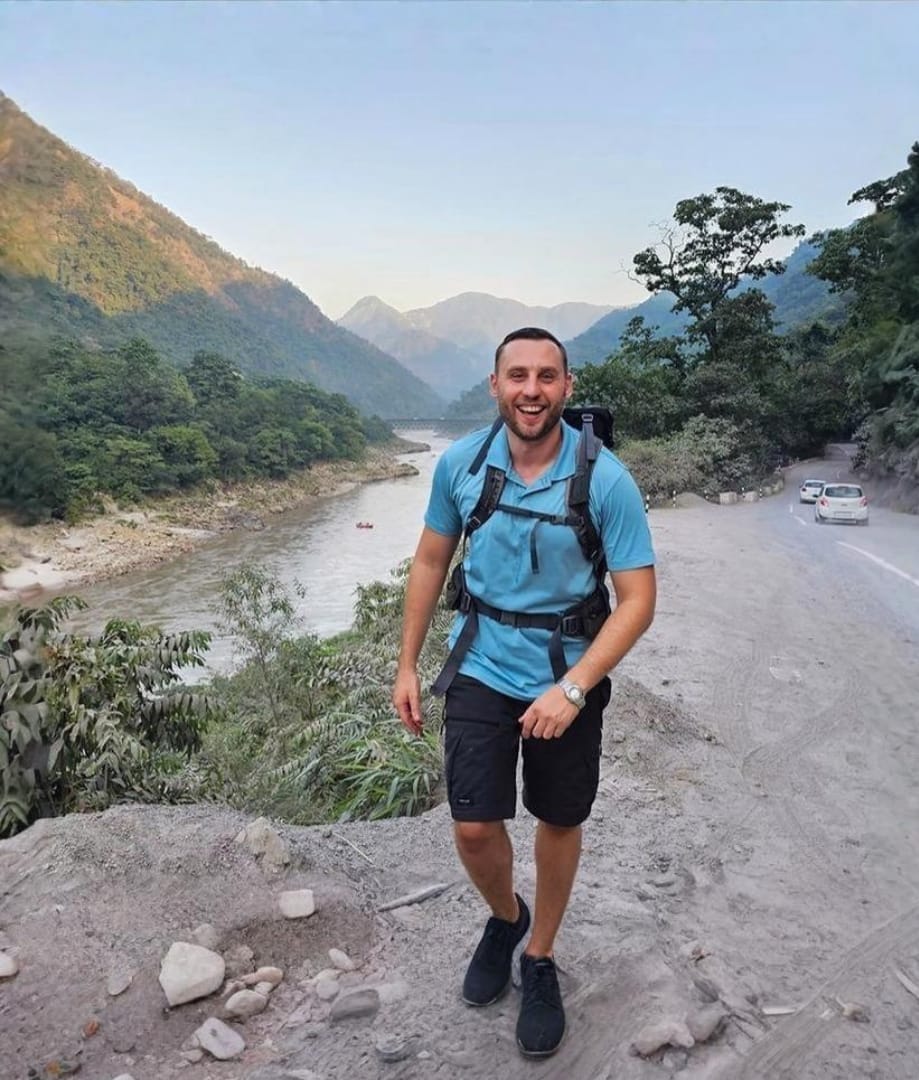
Rishikesh India, 2024

Receive Portions of
the Complete Practical Spirituality.
Receive additional practical materials, get access to the community group, and stay updated on the latest projects.
By submitting, I agree to receive emails from the MySpiritWay. This work is based on the Fair Exchange Model.
Key Goals and Benefits
Core Transformations That Unlock Countless Other Benefits:
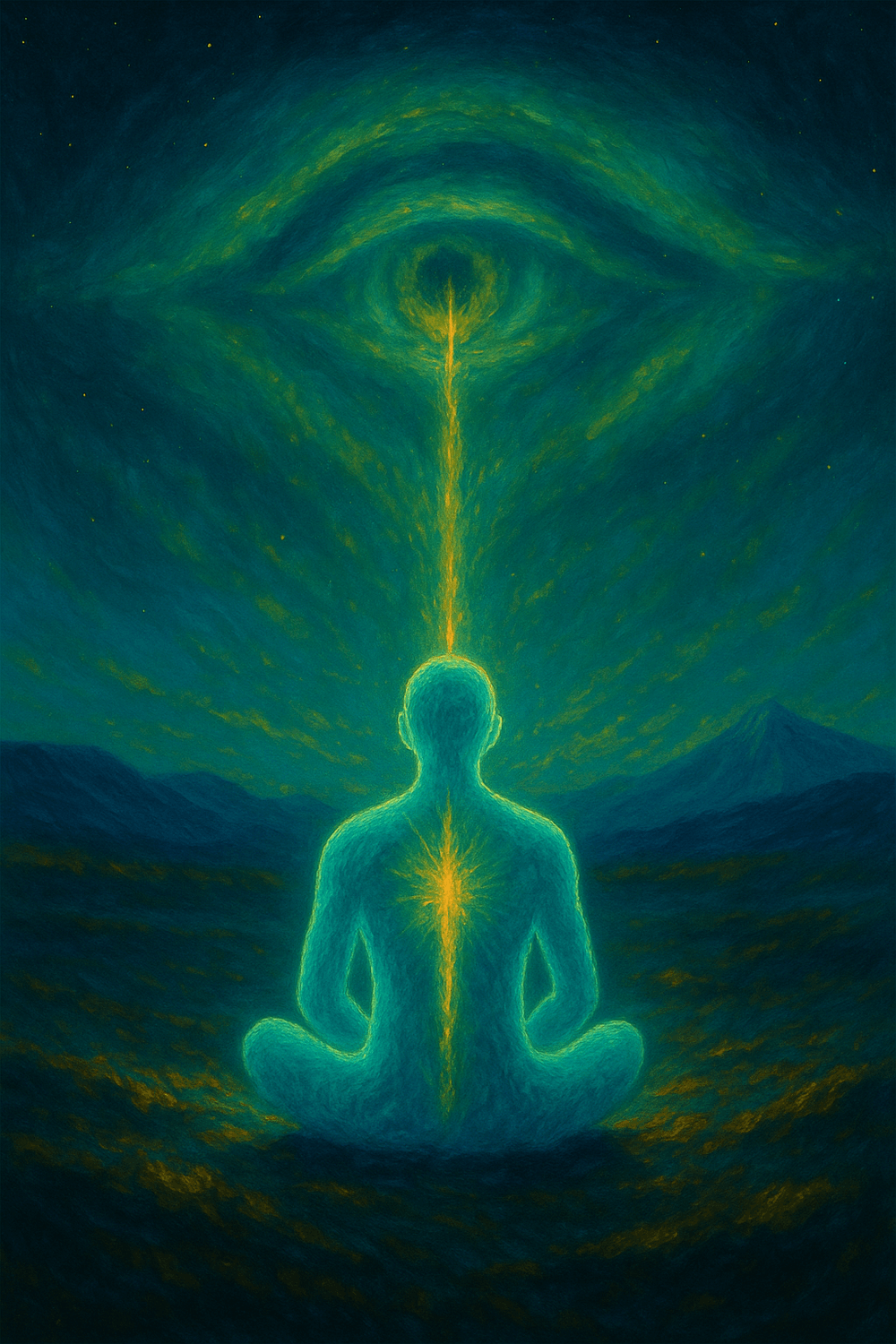
Accelerate the Evolution of Consciousness
Begin to see life through a more awakened lens. As your consciousness evolves, you’ll experience a deeper clarity, expanded awareness, and a more complete sense of reality itself.
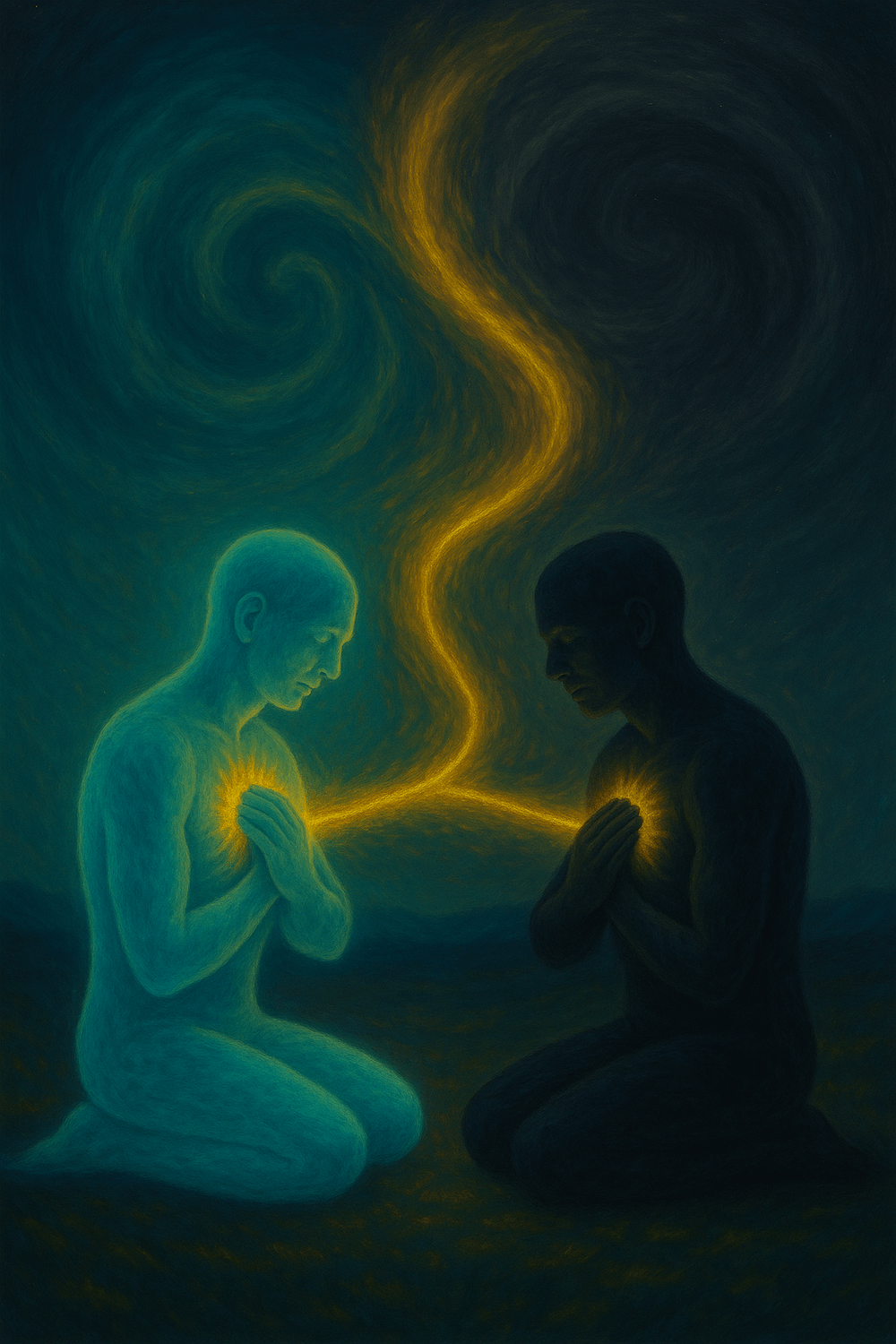
Reduce Unnecessary Suffering
Free yourself from patterns that create inner struggle. With deeper understanding, you naturally align with higher choices—making life simpler, lighter, and more meaningful.
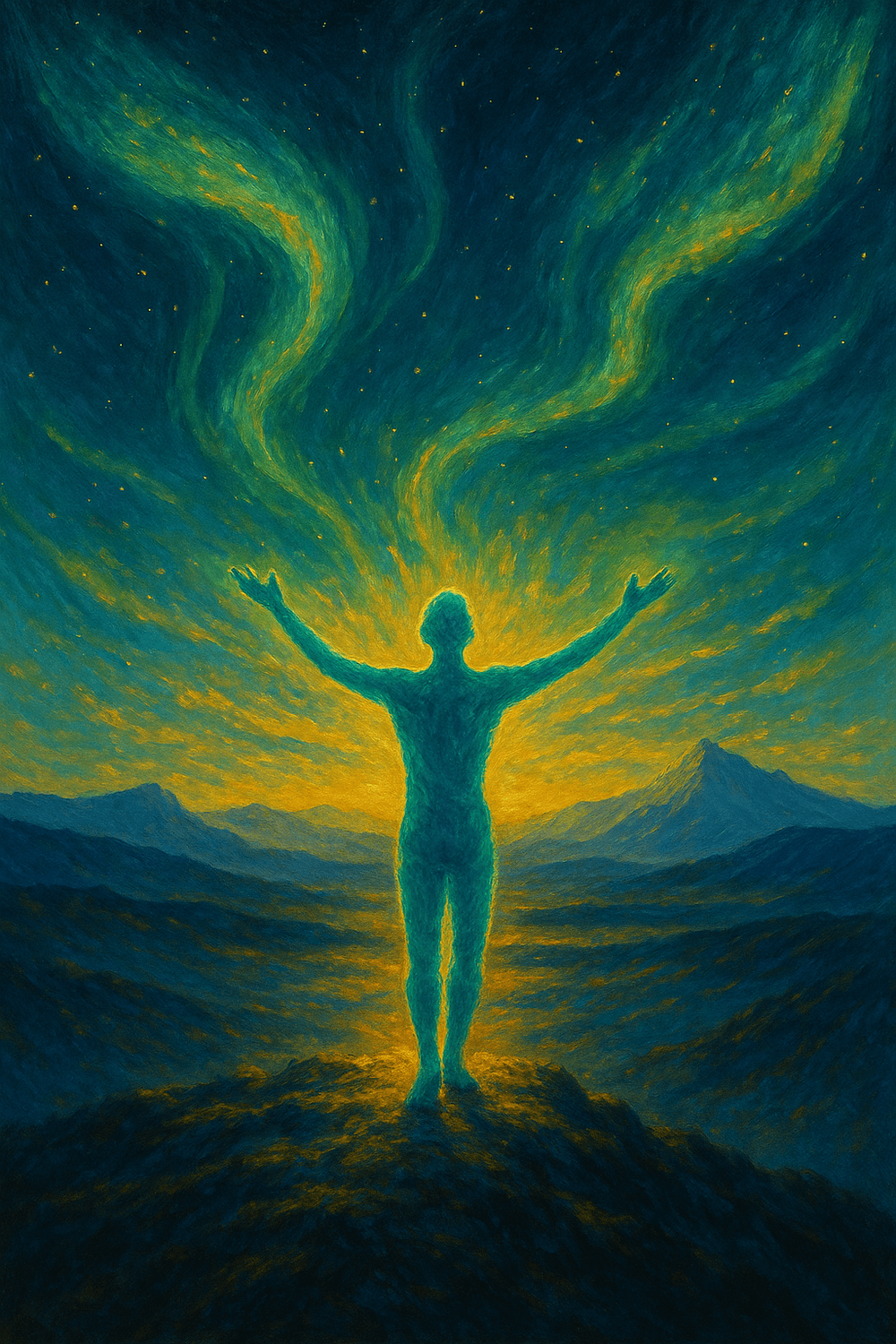
Achieve Complete Lasting Life Happiness
Discover what truly matters to you. As you bring awareness to neglected areas of your life, you begin to experience a deeper satisfaction—one that doesn’t fade, because it comes from within.
The Simplified² Practical Spirituality
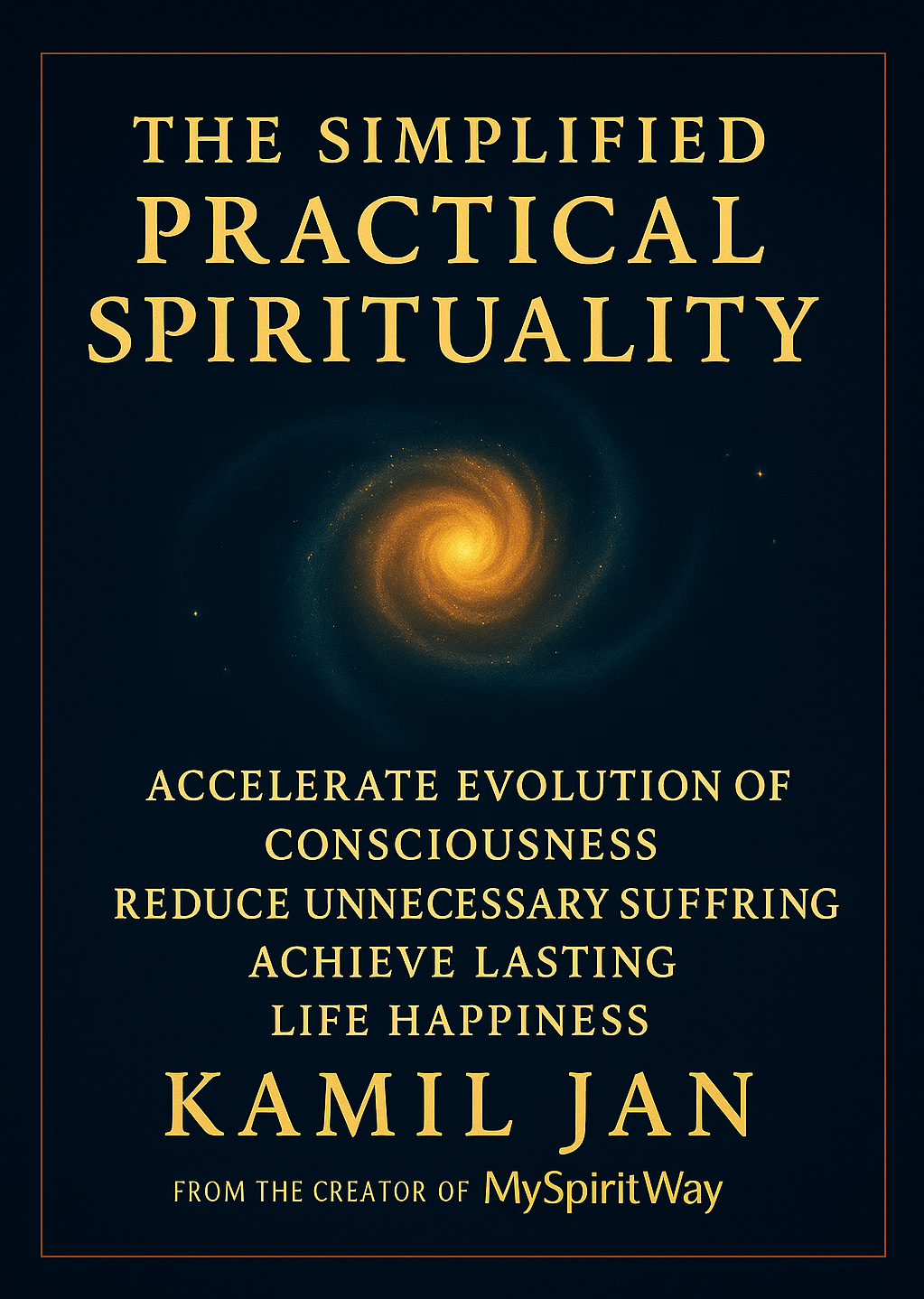
Ultra Short Videos Inspired by the Guidebook
Videos will be successfully added to this playlist.
Part 1 - Develop Deeper Understanding
Below you can find summaries and audio for each of the knowledge chapters.
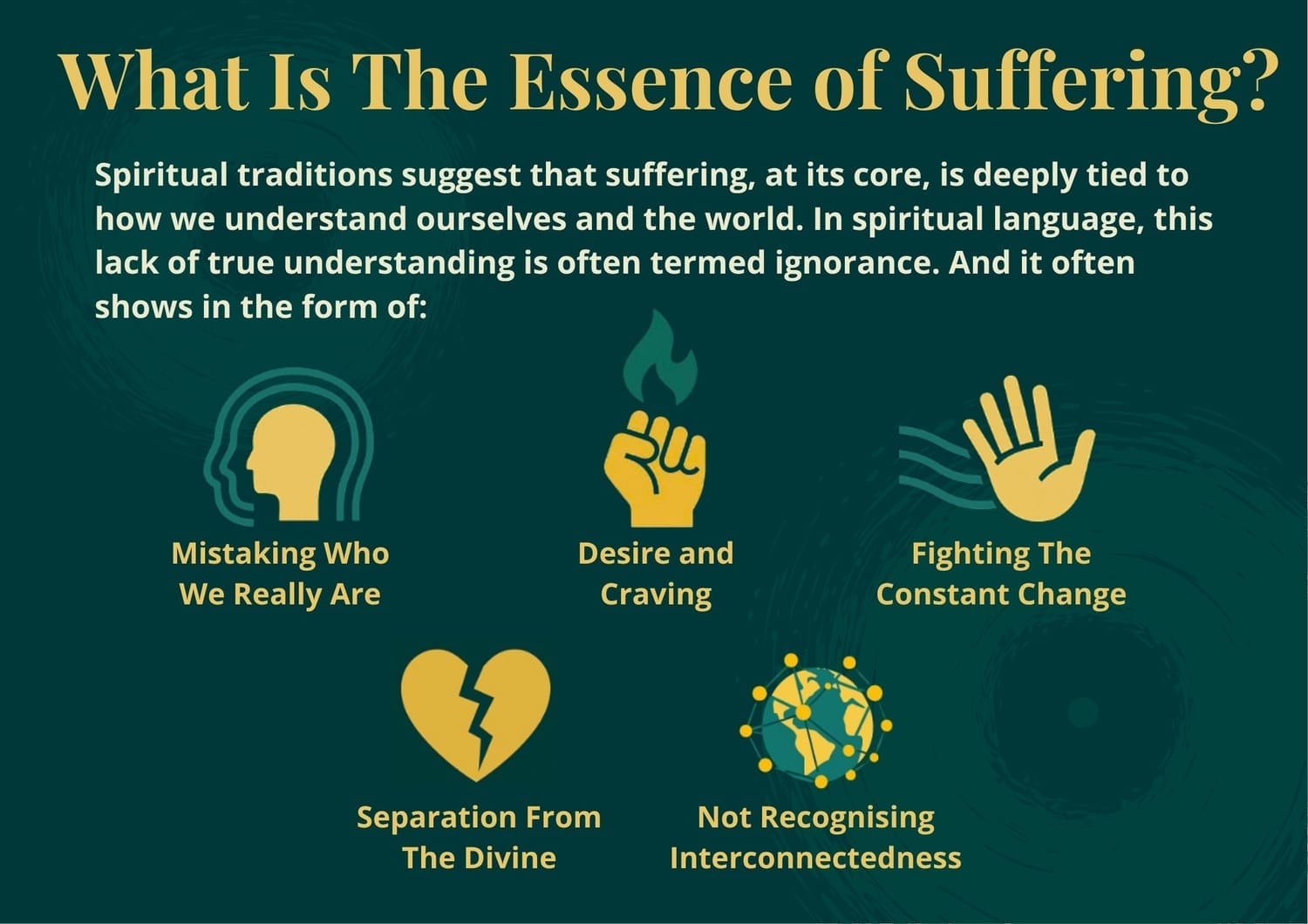
What Is The Essence of Suffering?
Suffering is something we all face, yet few of us truly pause to explore where it actually comes from. Most spiritual traditions agree: the root of suffering comes from misunderstanding. More specifically, misunderstanding about how we perceive ourselves and the world.
We often think we’re separate, isolated selves — trying to control a world that’s always changing. But that’s not the full truth. Beneath our thoughts, identities, and stories, we’re part of something deeper — an evolving, intelligent, and interconnected unity. To forget this is what many wisdom traditions call “spiritual ignorance”—and it quietly fuels much of the suffering we carry.
This misunderstanding shapes how we relate to our bodies, our minds, others. It fuels fear, anxiety, ego struggles, and disconnection.
The good news is: once we begin to see this more clearly, everything starts to shift. Not instantly, but gradually — through awareness, and through practices that reconnect us to what’s real.
Key Idea:
A great deal of suffering arises from a lack of true understanding—especially about the nature of the self, the impermanence of all things, and our deep interconnectedness with everything.
How We Can Meet It Differently:
The journey begins with recognizing certain truths, first as intellectual understanding or logic, then through direct experience. Spiritual practices help us move from intellectual understanding to living, embodied wisdom.
Reflection:
🤔What kind of pain or struggle shows up most often in my life — physical, emotional, or something else?
🤔When I feel pain, what is my usual reaction — do I try to avoid it, fight it, ignore it?
🤔 Do I ever notice that my thoughts or beliefs about a situation make it feel worse?
🤔 Is it possible that the way I see or think about things is part of what creates my suffering?
🤔Have there been hard moments in my life that also helped me grow, learn, or understand something important?
🤔What might change if, instead of pushing pain away, I tried to listen to what it was showing me?
These questions don’t have to be answered perfectly. Just exploring them with honesty can begin to shift how we relate to suffering.
Micro-definitions of Suffering:
🔹 Suffering is the emotional tension between what is — and our resistance to it.
🔹 Suffering is the pain that comes from forgetting our deeper nature beyond ego and identity.
🔹 Suffering is what arises when we cling to what’s passing or fear what’s changing.
🔹 Suffering is a signal — inviting us to look deeper and grow in understanding.
🔹Suffering isn’t just about what happens to us — it’s about how we relate to what happens.
🔹 Suffering can be a doorway to spiritual transformation.
In the end, suffering also carries transformative potential. When met with awareness, it can become a powerful catalyst for the evolution of consciousness.
👉 Read the full chapter → (Read about different dimensions of suffering in greater details)
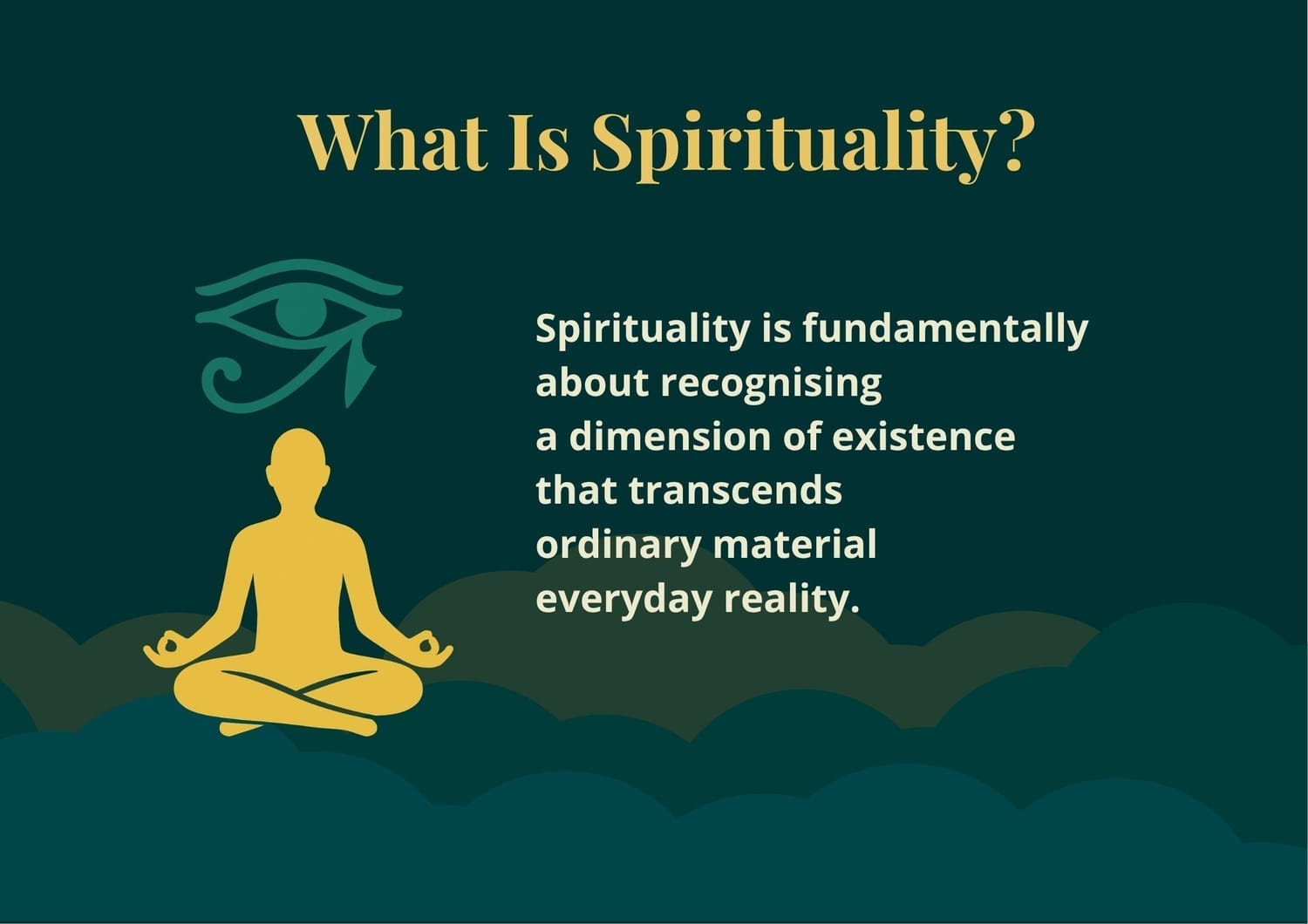
What Is Spirituality?
Spirituality begins with a quiet sense that life holds more than what we can see, measure, or explain.
It gently draws us beneath the surface of daily life, inviting a deeper connection with ourselves, with others, and with life itself.
Rather than following a fixed dogma, spirituality is a personal and evolving experience.
Some people find it within religious traditions, while others experience it through nature, creativity, stillness, personal reflection, or other meaningful paths.
At its core, spirituality is about awakening to a fuller, more connected way of being.
It often begins with a subtle inner longing — the feeling that there must be more than routines, consumption, or the pursuit of success.
This longing may be stirred by awe, inspiration, stillness, or even suffering. And when we begin to truly listen to it, something within us shifts.
We start to see life differently, and a deeper journey begins — a journey that invites us to grow, to let go of what no longer serves us, and to live with more presence and purpose.
Moreover, spirituality invites us to ask the essential questions:
Who am I? Why am I here? What truly matters?
It invites us to explore these questions not just by thinking about them, but by living them — through mindful presence, heartfelt relationships, and the inner work of growth and healing.
Key Idea:
Spirituality is the journey of awakening — or gently reminding ourselves — of a deeper dimension of life, one that reveals connection, meaning, and the hidden truth of both ourselves and reality.
How We Can Meet it Differently:
We don’t need to wait for a perfect moment. We need to realise that the path is already unfolding, and what shifts is our ability to notice it.
Spiritual practices like meditation, reflection, and conscious living help us move from thinking about truth to living it directly.
Reflection:
🤔When have I felt a quiet sense that life might be more than what I can see or explain?
🤔What gives my life meaning — and am I connected to it in daily experience?
🤔Do I ever feel pulled toward something deeper, even if I can't name it?
🤔In what moments do I feel most awake, most connected, most myself?
🤔What might change if I gave more space to presence, stillness, or reflection in my life?
These questions aren’t meant to be answered perfectly. They’re invitations into something deeper.
Micro-definitions of Spirituality:
🔹 Spirituality is the inner search for meaning beyond the material.
🔹 Spirituality is the felt experience of deep connection — to self, others, and life itself.
🔹 Spirituality is waking up from autopilot into conscious presence.
🔹 Spirituality is the process of remembering who we are, beyond fear, ego, or limited identity.
🔹 Spirituality is a way of living — grounded, open, and attuned to the sacred in the ordinary.
In the end, spirituality is not an escape from life, but a deeper engagement with it.
It brings us into presence, opens us to love, and reminds us that even in the midst of chaos, something meaningful and beautiful is always here.
👉 Read the full chapter → (Find over 10 different perspectives on Spirituality)
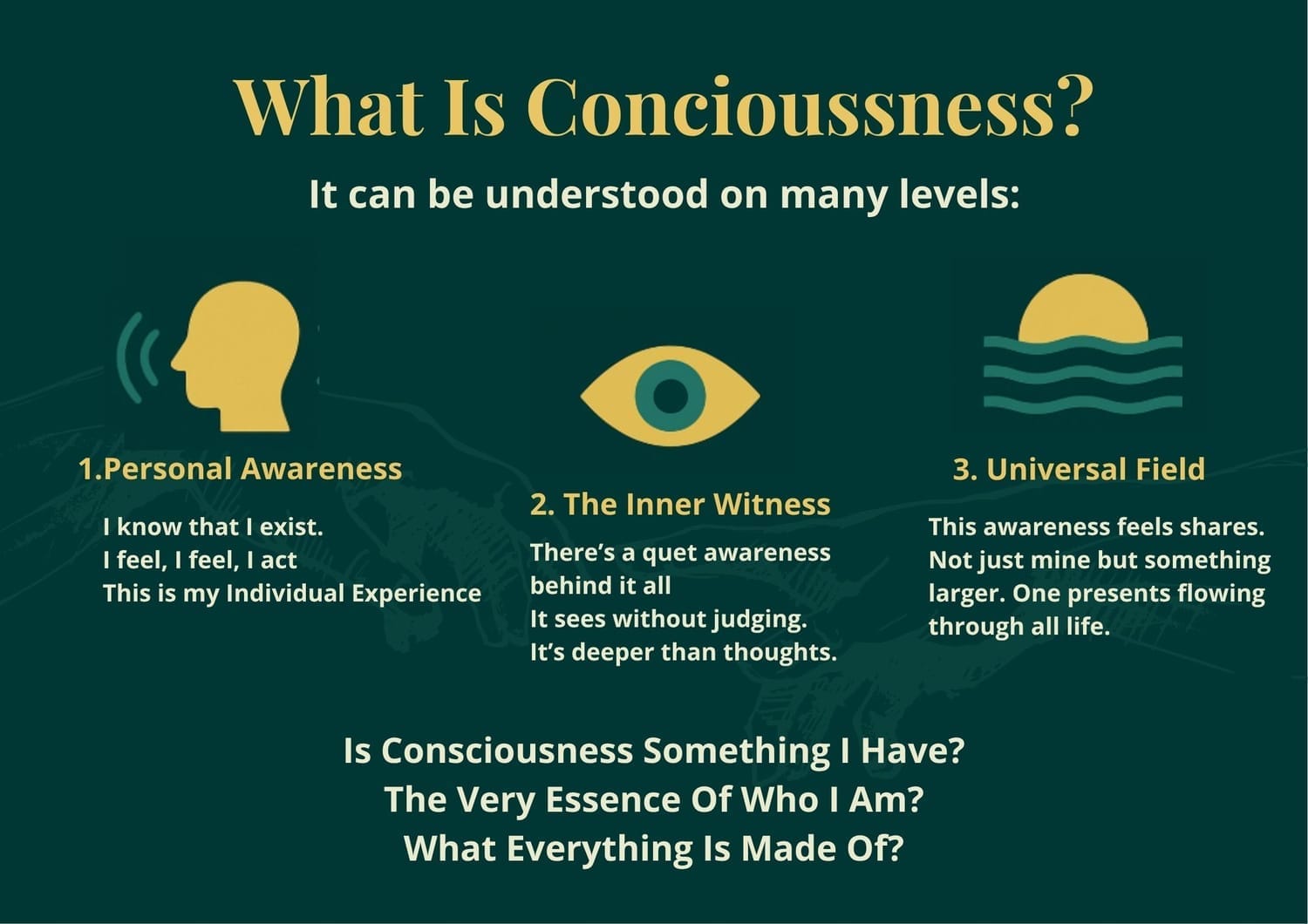
What Is Consciousness?
Consciousness is the simple yet profound experience of being aware. We are aware of thoughts, emotions, sensations, and the world around us. This awareness is like an open space in which all of life unfolds. It is always present, always witnessing. Often, we take this awareness for granted and assume it is something the brain produces. But in moments of stillness, deep insight, or inner clarity, something becomes clear. We sense that there is more to us than thoughts, emotions, or the roles we play. There is a quiet presence that remains in the background. It does not depend on doing or thinking. It simply exists. Many spiritual traditions have pointed toward this deeper dimension of being. They describe it not as something we invent or achieve, but as a timeless awareness that has always been here. Like the sky behind moving clouds, it remains untouched by whatever passes through our experience. As we begin to explore this more deeply, we start to realize that consciousness is not just a function of the mind. It is not something we merely have. It is what we are. And when we rest in this natural space of being, life starts to feel different. It becomes more spacious, more alive, and more deeply connected.
Key Idea:
Consciousness is not just a product of the brain — it’s the deeper field in which all experience appears. It is both the mystery we live within and the essence of who we truly are.
How We Can Meet It Differently:
Consciousness doesn’t need to be created or achieved. It is already here, quietly present behind every experience. What helps us access this presence is the simple act of slowing down, becoming still, and paying attention.
When we stop identifying so tightly with our thoughts, roles, and emotions, something deeper begins to reveal itself.
A spacious awareness becomes visible — one that observes without the need to judge or control.
Practices such as meditation, self-inquiry, breath awareness, or simply being mindful in daily moments can help us reconnect with this natural state.
Over time, the process becomes less about striving and more about recognizing.
We are not chasing awareness, but returning to what has always been here.
Reflection:
🤔 What is it that notices my thoughts — but is not the thoughts themselves?
🤔 Can I feel the presence behind my emotions, even as they rise and fall?
🤔What remains when I’m not caught in labels, stories, or roles?
🤔 Is there something in me that has always been here — through every age, every change?
🤔 Do I need to do anything to be aware, or is awareness already present?
These questions aren’t puzzles to solve. They are reflections that help you recognize your true nature.
Micro-definitions of Consciousness:
🔹 Consciousness is the awareness, the canvas in which all thoughts, feelings, and sensations appear.
🔹 Consciousness is not something we “have” — it’s what we are at the most essential level.
🔹 Consciousness is the witnessing presence behind the stream of experience.
🔹 Consciousness is personal and intimate — yet opens into something universal.
🔹 Consciousness is the unchanging background behind all change.
In the end, consciousness is not something distant or abstract — it’s what’s most immediate and intimate. As we begin to rest in this space, a quiet shift occurs: life feels more alive, and we begin to experience reality and ourselves more directly, with less chaos and more clarity.
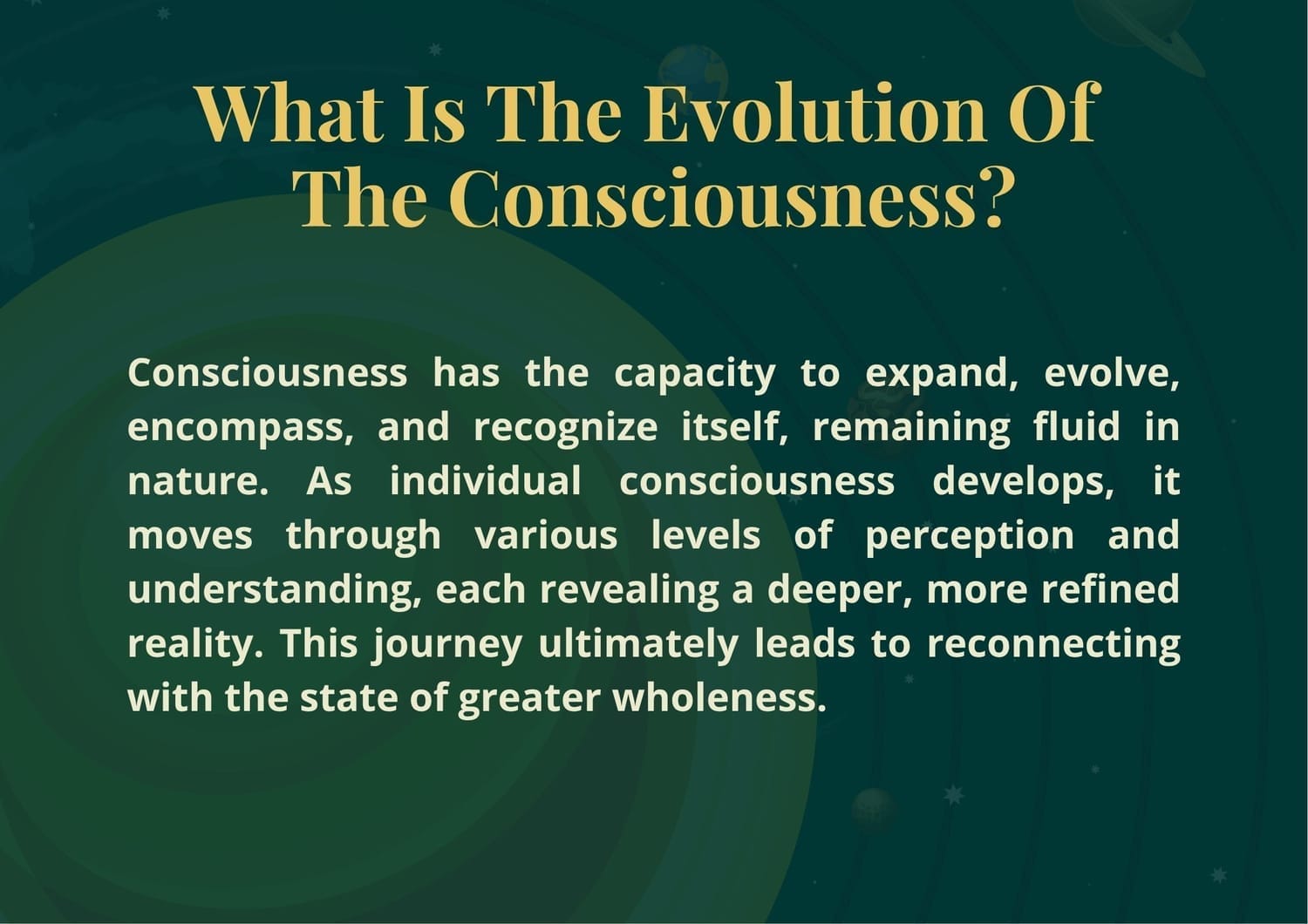
What Is The Evolution Of The Consciousness?
Consciousness, like everything in life, is always changing — expanding, deepening, and evolving in each moment.
Beneath our everyday awareness lies a powerful potential: the shift from feeling separate and limited to feeling deeply connected to something greater and more whole.
We are part of a vast, unfolding journey. Over billions of years, the universe has moved from simplicity to complexity — from matter to life to awareness. Consciousness has not appeared apart from this process, but as one of its most mysterious and profound expressions.
This evolution isn’t just about gaining knowledge. It’s about seeing through illusion — especially the illusion of separation. As consciousness matures, we begin to sense the underlying unity of all things. We recognize that we are not isolated fragments, but living expressions of a greater wholeness.
This shift transforms how we live. As consciousness evolves, so does our capacity for compassion, creativity, and presence. We act less from fear or ego, and more from love and understanding. We begin to live not just for ourselves, but from a deeper sense of belonging and connection.
Ultimately, the evolution of consciousness is not about becoming something else. It is a return — a remembering of what has always been here. We awaken not by adding more, but by uncovering the truth of what we already are.
Key Idea:
The evolution of consciousness is the journey from separation to connection, from confusion to clarity, from illusion to truth. It’s both personal and universal — a process of remembering our shared source while becoming fully ourselves.
How We Can Meet It Differently:
The evolution of consciousness unfolds within, becoming clearer as you tune in to the movement inside and notice how life invites greater honesty, depth, and connection.
Growth happens when you allow yourself to release what no longer serves you, making space for your deeper nature to emerge. The more you follow what feels true within, the more life becomes natural, honest, and vibrant.
Meeting your own unfolding with presence and trust allows you to experience your evolution in a deeper, more meaningful way.
Reflection:
🤔 In what ways has my understanding of life changed over the years — and what sparked those shifts?
🤔 When have I felt more connected to something greater than myself?
🤔 What beliefs or identities have I outgrown — and what have they made space for?
🤔 Can I sense a part of me that is growing, deepening, or waking up?
🤔 What would it mean to trust the unfolding of my own consciousness?
Micro-definitions of the Evolution of Consciousness:
🔹 The evolution of consciousness is the shift from ego-based perception to deeper, more connected awareness.
🔹 It is a movement from separation to unity — both within and beyond the self.
🔹 It unfolds through self-inquiry, presence, and inner transformation.
🔹 It is a return to what has always been true — beneath conditioning and identity.
🔹 It is how the universe becomes aware of itself, through us.
In the end, the evolution of consciousness is not a destination — it’s an invitation. To live more awake. To love more freely. And to remember, again and again, that who you are is not separate from the whole.
👉 Read the full chapter → (Try visualisation of the Cosmic Journey of Consciousness)
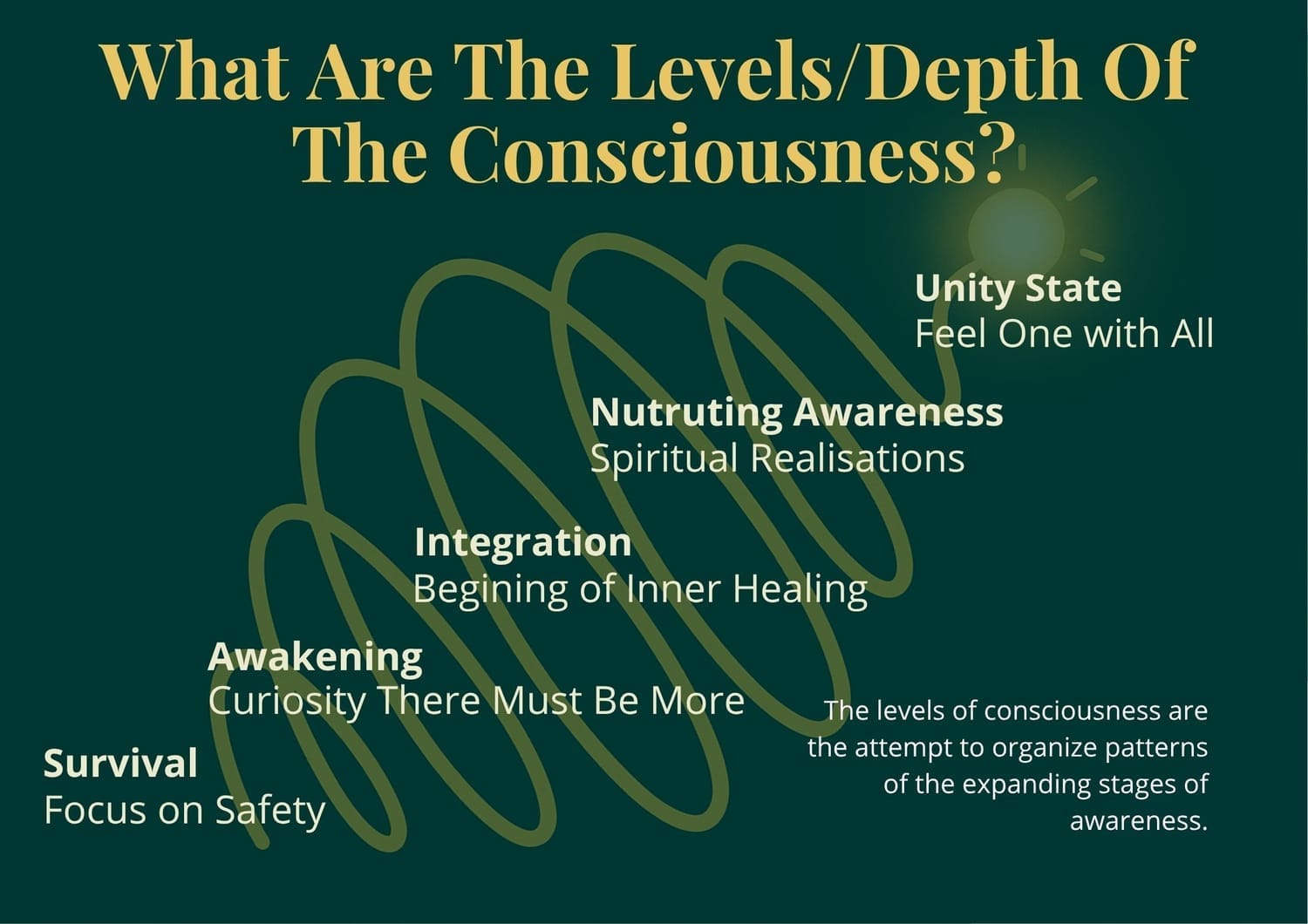
What Are The Levels/Depth Of the Consciousness?
The evolution of consciousness isn’t a fixed or linear path — but it often unfolds in recognizable patterns.
From early stages centered on survival and control to more expansive states of clarity, connection, and unity, this journey reflects a gradual shift from separation to wholeness.
In the beginning, we’re often caught in fear, material struggle, and egoic patterns. But as awareness deepens, new questions emerge — about meaning, identity, and what’s truly real. The path isn’t always easy; it asks us to face inner shadows and conditioned beliefs. Yet with each step, space opens for greater truth, freedom, and authenticity.
As consciousness expands, the sense of a fixed self begins to soften. We start to feel part of something greater — a living web of connection. Compassion deepens. The grip of duality loosens. Eventually, the boundary between self and life dissolves, revealing a deeper presence, peace, and love.
This unfolding doesn’t look the same for everyone. But across traditions and lives, a shared movement appears: we grow from ego to essence, from fragmentation to unity, from isolation to belonging.
Key Idea:
The levels of consciousness reflect stages of awakening — from basic self-focus to expansive states of inner freedom, truth, and unity. As awareness deepens, so does our ability to live with compassion, presence, and wisdom.
How We Can Meet It Differently:
Growth unfolds through recognizing and accepting exactly where you are. Every stage of consciousness brings unique lessons and gifts, and clarity begins when you welcome your present experience.
Awareness grows when you slow down and pay attention to the patterns, habits, and beliefs that are active within you. Giving space for honest noticing allows old stories to soften, creating space for something deeper to emerge.
Practices such as mindful reflection, inner inquiry, and body awareness offer gentle ways to understand yourself more deeply. Each time you accept and integrate what arises, a new level of understanding naturally opens up.
This journey grows brighter as you focus on the step you’re living right now. Presence and acceptance create the foundation for authentic growth.
Reflection:
🤔 Where do I find myself in this journey of inner evolution — and what patterns or questions are most present right now?
🤔 What habits or beliefs keep me in older patterns — and what would help me grow beyond them?
🤔 Have I ever touched a deeper state — even briefly — that felt more real, more free?
🤔 What kind of world might I help shape by growing into higher awareness?
🤔 Am I willing to meet myself with honesty and compassion, wherever I am or hold to what's old and bringing suffering?
Micro-definitions of Consciousness Levels:
🔹 Consciousness grows through stages — from ego to unity.
🔹 Lower levels are marked by fear, survival, and control.
🔹 Middle levels involve self-reflection, healing, and inner truth.
🔹 Higher levels express clarity, love, and deep interconnection.
🔹 The journey is both inward and upward — toward wholeness and return.
In the end this model is a simplified introduction. The full richness of this path can be found in deeper explorations from spiritual traditions, psychological frameworks, and wisdom lineages across cultures. Many share a common theme: the movement from fragmentation to wholeness, from ego to essence.
👉 Read the full chapter → (Learn about the levels of consciousness described in more detail)
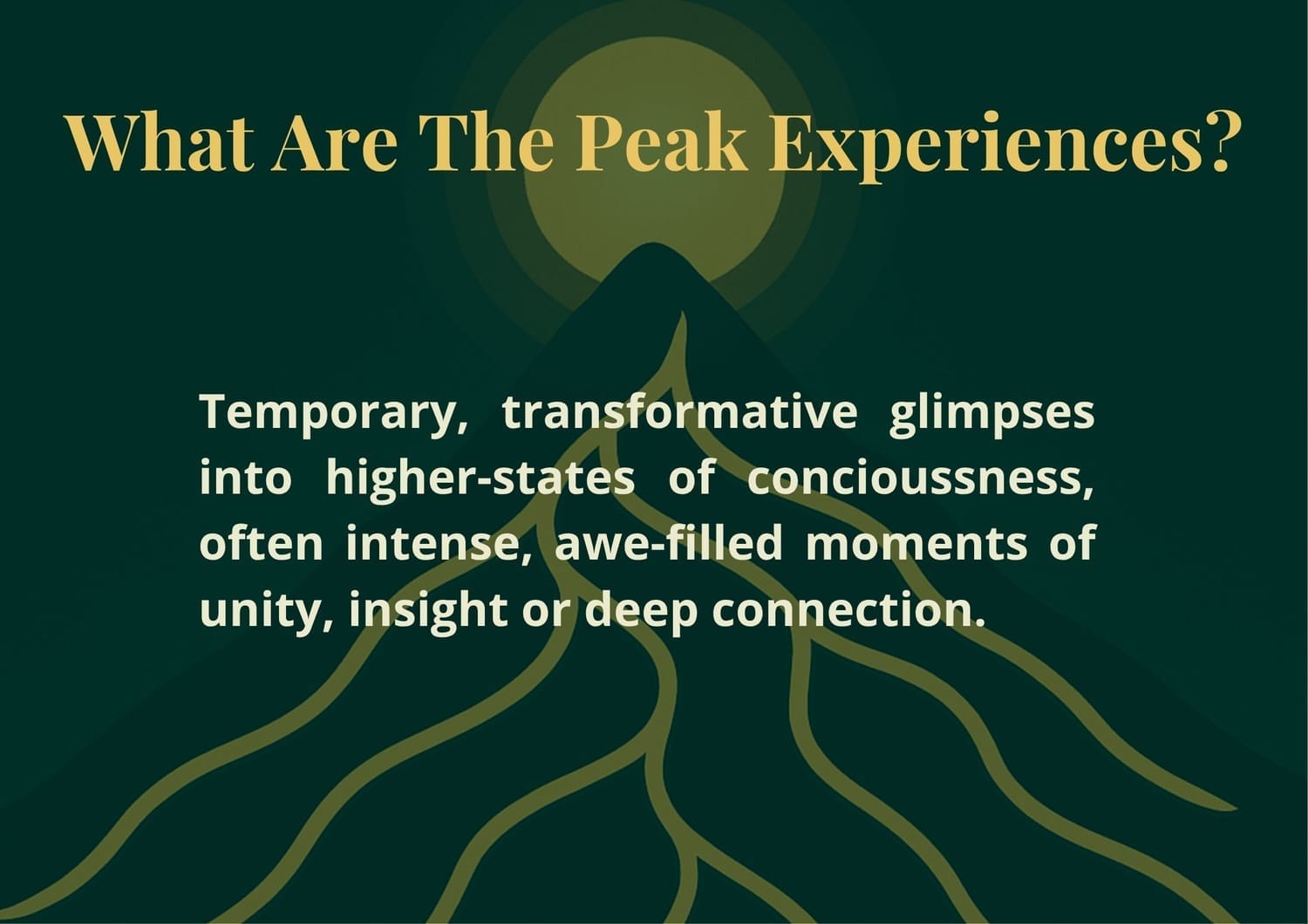
What Are The Peak Experiences?
Sometimes, life offers moments that shift everything — brief windows of extraordinary clarity, love, or unity. These are peak experiences: powerful glimpses into higher states of consciousness that reveal the deeper layers of our being.
In such moments, boundaries dissolve. We may feel one with nature, touched by a higher presence, or immersed in timeless stillness. Whether sparked by meditation, nature, creativity, sacred medicine, or a spontaneous insight, these experiences point beyond ordinary awareness — toward the truth that we are more than we usually believe.
Yet these moments aren’t meant to be chased or clung to. The real transformation comes through integration — learning to unpack and apply the insights into daily life. When honored and reflected on, peak experiences become seeds of awakening.
Key Idea:
Peak experiences are not the final goal, but invitations. They reveal what’s possible — and can open the door to lasting transformation if we take the time to integrate what they show us.
How We Can Meet It Differently:
These experiences often arrive unexpectedly — but we can cultivate the conditions that allow them to arise more naturally. Deep presence, spiritual practice, openness, and inner stillness all create space for something deeper to emerge.
Just as important as the experience itself is what happens after: integration. This means reflecting, grounding, and letting the experience reshape how we live. So we can allow a brief moment to become a lifelong shift.
Reflection:
🤔 Have I ever had a moment that felt deeply /profoundly alive, peaceful, or connected — even briefly?
🤔 What message or insight did it offer me — and have I honored it in my life?
🤔How might I prepare myself — not to force such moments, but to welcome them?
🤔Am I willing to live from the truth I’ve glimpsed, even when the feeling fades?
Micro-definitions of Peak Experiences:
🔹 Peak experiences are temporary glimpses into expanded states of consciousness.
🔹 Peak experiences reveal a deeper reality beyond ordinary perception.
🔹 Peak experiences often arise through awe, insight, stillness, or intense emotion.
🔹 Peak experiences dissolve the usual sense of separation and identity.
🔹 Peak experiences can act as powerful catalysts for lasting inner transformation.
In the end, peak experiences are not rare gifts reserved for a few — they are glimpses of what already lives within us. These moments can feel extraordinary, but their deepest value lies in how they illuminate the everyday. The invitation is not to chase them, but to integrate their insight — allowing them to shape how we live, love, and relate to the world with more presence, clarity, and depth.
👉 Read the full chapter → (Learn about different forms of Peak Experiences and more...)
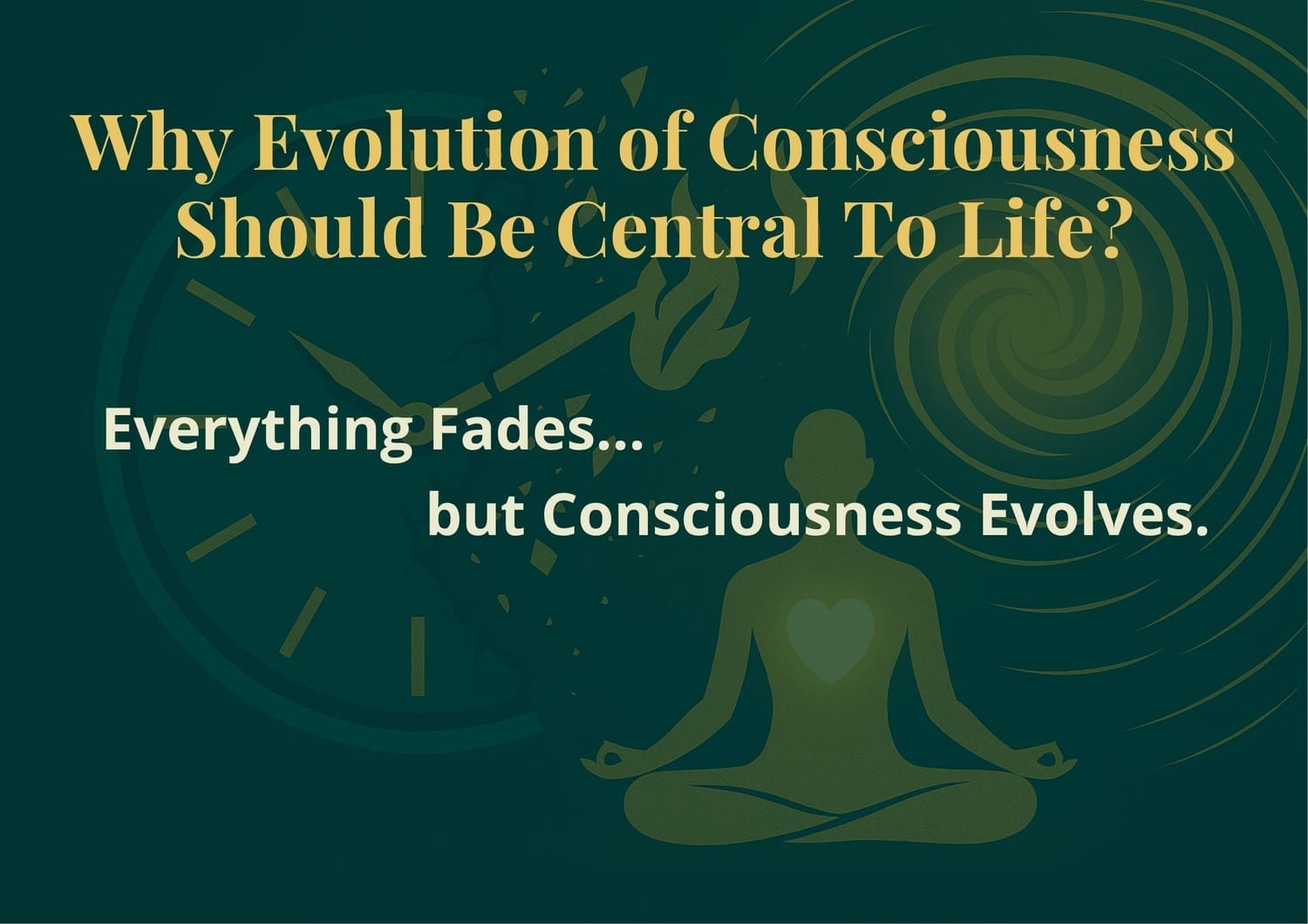
Why Evolution of Consciousness Should Be Central To Life?
There’s one thing we can count on in life: change. Relationships shift, success can fade, health declines, and even our roles and beliefs evolve. When our happiness depends on things that can be lost, suffering often follows.
But as we’ve explored before, beneath all the surface change, something more stable is quietly unfolding — consciousness itself.
As awareness deepens, we become less reactive and more present. We suffer less from the highs and lows, and begin to live with greater clarity, purpose, and connection.
This inner growth becomes a foundation that lasts. While the world keeps changing, our ability to meet life with deeper understanding and presence remains. These qualities begin to shape every part of life — and they are truly solid, no matter the circumstances.
Even if we don’t fully understand what consciousness is — whether we call it awareness, soul, or something deeper — dedicating your focus into it's growth transforms how we live. It opens the possibility of nurturing something beyond the material.
And it’s not just personal. As each of us evolves, we support a larger shift — toward a more conscious, compassionate world. In uncertain times, the evolution of consciousness gives us something steady to stand on, and a way to serve something greater than ourselves.
Key Idea:
In a world where everything changes, the evolution of consciousness offers a steady foundation. It grows with us, shaping how we love, how we live, and how we respond to both joy and suffering.
How We Can Meet It Differently:
Choosing to support the evolution of consciousness doesn’t mean abandoning everyday life — it means approaching it with more depth and care. We can still build, love, create, and engage — but now with the awareness that these experiences are temporary expressions, not ultimate sources of self-worth and happiness.
The real shift is inward. When we center our life around conscious growth, we stop chasing things to complete us — and start cultivating what cannot be taken away: wisdom, presence, compassion, clarity, and freedom, ultimately bringing higher spiritual virtues into every part of life.
Reflection:
🤔Where have I placed my sense of meaning — and is it built on something that will last?
🤔 What would it mean to live from awareness, not just reaction?
🤔 How might my relationships or work change if guided by deeper understanding?
🤔 What if evolving my consciousness is not an escape — but the most grounded path I could walk?
Micro-definitions of the Evolution-Centered Life:
🔹 A life guided by awareness, not ego or fear
🔹 A shift from external striving to inner alignment
🔹 A path of living fully, while knowing all things are temporary
🔹 A conscious contribution to personal and collective transformation
🔹 A journey of becoming who you truly are — beyond roles, stories, and form
In the end, placing consciousness at the center of your life doesn’t mean losing the world — it means rediscovering it. You stop grasping for permanence in impermanent things and begin living from what has always been here: the quiet clarity of being.
👉 Read the full chapter → (Ground your understanding deeper)
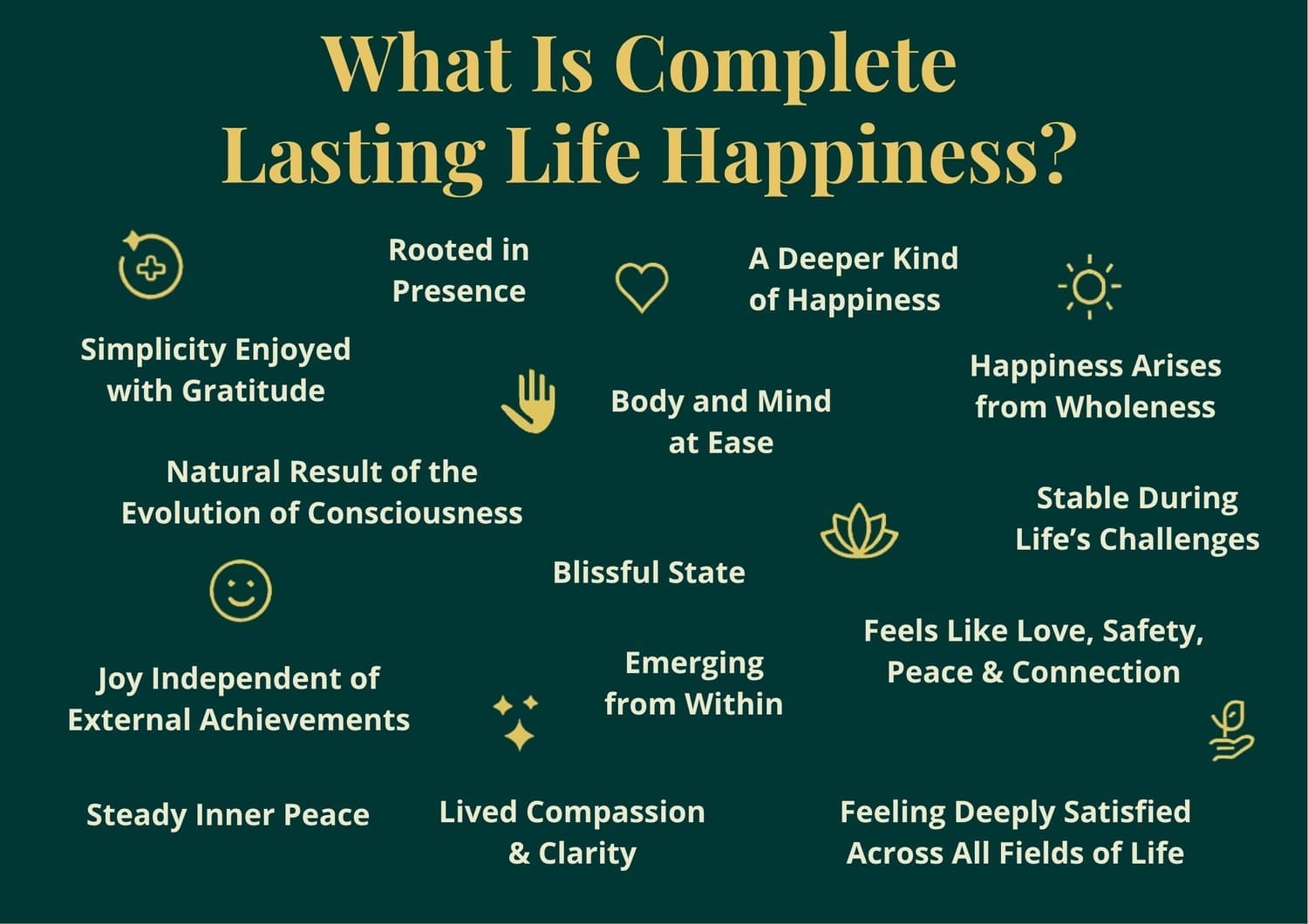
What Is The Complete Lasting Life Happiness?
No matter what direction life takes, most of us are simply trying to feel good inside. We want to feel loved, safe, peaceful — and if we look a bit deeper, connected. We might not always say it that way, but it shows in the things we chase: comfort, success, approval, meaningful relationships, or even just a break from stress.
Often, we pursue these things without thinking too much about it. It’s natural to move toward what feels good and away from what hurts. But over time, many of us begin to notice a pattern: even when we get what we want, the feeling doesn’t always last. Joy fades. Success becomes routine. Relationships shift. And before long, we find ourselves searching again.
That’s when a deeper kind of happiness begins to matter.
After reflecting on it, the name Complete Lasting Life Happiness feels like a simple and clear way to describe this deeper experience.
It’s not a peak moment or a perfect life. It’s a steady feeling within — a sense of calm, clarity, and presence — that stays, even when life becomes uncertain or difficult.
You might feel it when you wake up and there's no rush of anxiety. When you enjoy something simple and don’t feel like you need more. When challenges arise, but you’re still able to stay grounded. It’s a quiet strength — not flashy or dramatic — but deeply real.
This kind of happiness doesn’t rely on constant achievements or outside success. It grows from being present, living truthfully, and treating yourself and others with care. Over time, your mind becomes clearer, your body more at ease, and your responses more steady and wise.
Spiritual traditions speak of this state in many ways — Samādhi, Nirvana, Moksha, Enlightenment — all pointing to a deep, lasting peace. But what truly matters is this: such steady happiness is possible. It’s not reserved for a few. It’s not something we have to chase. It unfolds naturally when we live more consciously.
This isn’t about escaping the world. It’s about meeting life fully — the beauty and the mess — while staying connected to something deeper than the ups and downs.
Key Idea:
Complete lasting happiness isn’t something we get from the outside. It grows from how we live — with presence, care, and inner alignment. The more we live from our truth, the more happiness becomes something steady and real.
How We Can Meet It Differently:
Instead of chasing moments of happiness and hoping they stay, we begin to meet life from the inside out. That means noticing how we live — in our work, our relationships, our choices — and slowly bringing more clarity and care into each part.
Happiness doesn’t arrive all at once. It unfolds over time as we live with more awareness, respond more honestly, and stop avoiding what’s hard. This kind of joy is not separate from real life. It grows through it.
Reflection:
🤔In which areas of my life do I feel most deeply aligned and fulfilled?
🤔Where do I sense imbalance, neglect, or disconnection — and why?
🤔What would it look like to bring more conscious attention to each area of my life?
🤔What does “true happiness” mean to me — and how might I live from that meaning today?
🤔How would my life look if I focused more on inner steadiness than on outside success?
🤔What small actions today could help me live with more presence and care?
Micro-definitions of Complete Lasting Life Happiness:
🔹A steady feeling of inner peace that stays, even when life changes
🔹 The fruit of conscious, integrated living across all areas of life
🔹 The lived expression of inner clarity, compassion, and presence
🔹A happiness that’s not separate from spiritual depth — but lived through daily life
🔹 A life where happiness is no longer chased, but naturally arises from wholeness
In the end the complete happiness is not a peak to reach — it’s a way of being. As we live more from who we truly are, happiness stops being something to chase. It becomes the very ground we walk on.
👉 Read the full chapter → (Try exercise which will help you to reflect on satisfaction across 12 areas of life)
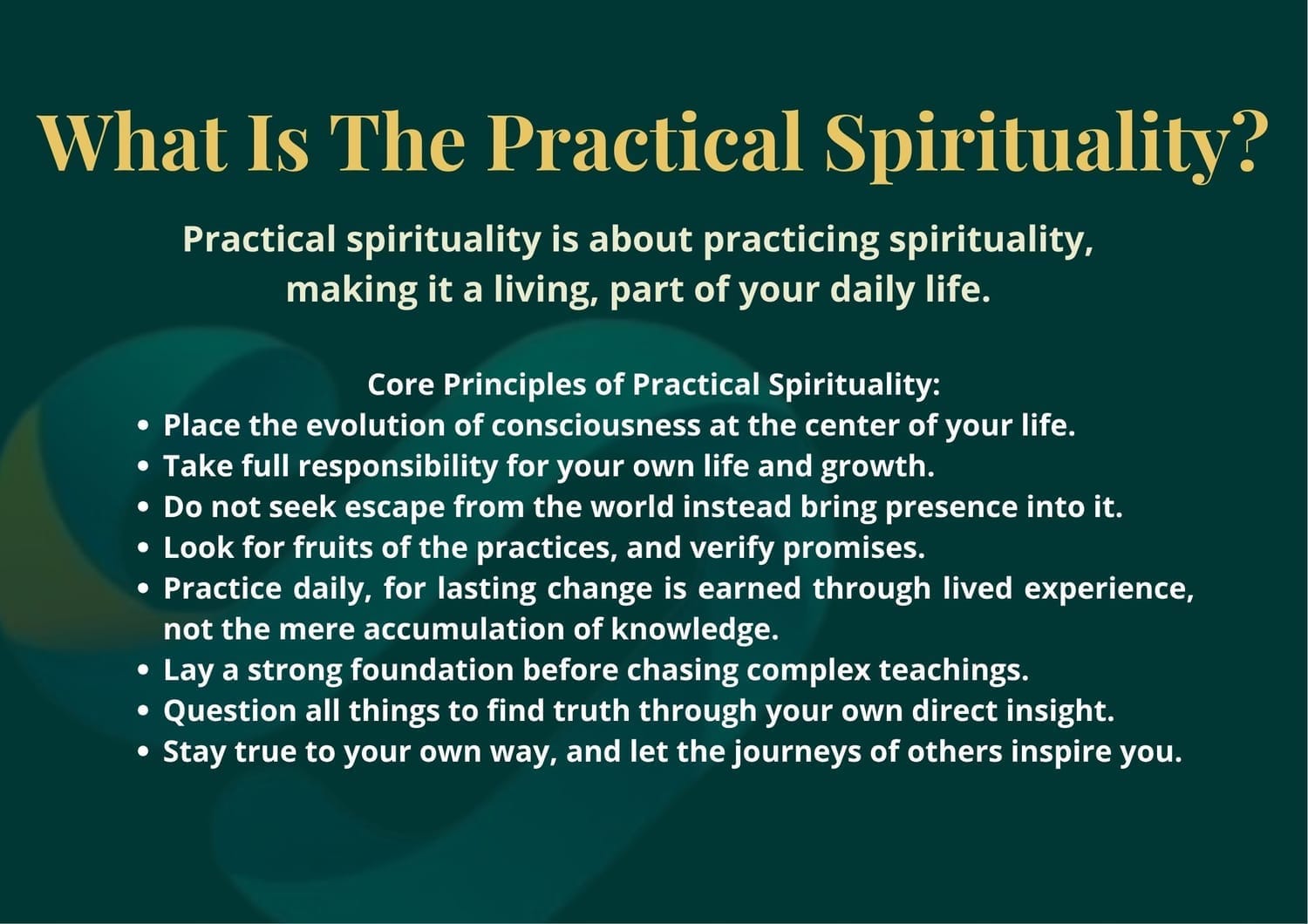
What Is The Practical/Pragmatic Spirituality?
Practical spirituality is about practicing spirituality, making it a living part of your daily life.
Rather than keeping it abstract or limited to retreats, it focuses on applying deep insights in tangible, everyday ways. It can be practiced by anyone, regardless of lifestyle, belief system, or level of commitment.
Core Principles of Practical Spirituality:
🔹Place the evolution of consciousness at the center of your life.
🔹Take full responsibility for your own life and growth.
🔹Do not seek escape from the world — instead, bring presence into it.
🔹Look for fruits of the practices, and verify promises.
🔹Practice daily, for lasting change is earned through lived experience, not the mere accumulation of knowledge.
🔹Lay a strong foundation before chasing complex teachings.
🔹Question all things to find truth through your own direct insight.
🔹Stay true to your own way, and let the journeys of others inspire you.
The active embodiment of these principles is known as the Practical Spiritual Path.
Key Idea:
Spirituality is not something separate from life — it’s how we live each moment.
Practical spirituality means applying insight with clarity, presence, and integrity in everyday situations.
Micro-Definitions of Practical Spirituality:
🔹 Practical spirituality is applying spiritual insight in everyday choices.
🔹 Practical spirituality is bringing awareness into the ordinary moments of life.
🔹 Practical spirituality is living a life that unites mind, body, and spirit.
🔹 Practical spirituality is letting presence guide how we speak, act, and relate.
🔹 Practical spirituality is turning understanding into lived experience.
Reflection
🤔 Which principles are you most drawn to, and why?
🤔 Are there any that you feel need deeper personal reflection before you can fully embrace them?
In the end, practical spirituality is the how-to of inner growth. It's the art of walking your talk, of letting awareness touch everything you do, until your whole life becomes the path.

Join the Community
More of Practical Spirituality, Access to the Community Group, Update About Newest Projects
By Submitting you accept to receive emails from us.
This work is based on the Fair Exchange Model.
Part 2 - Take Actionable Steps
Below you can find the actionable part of the guidebook.
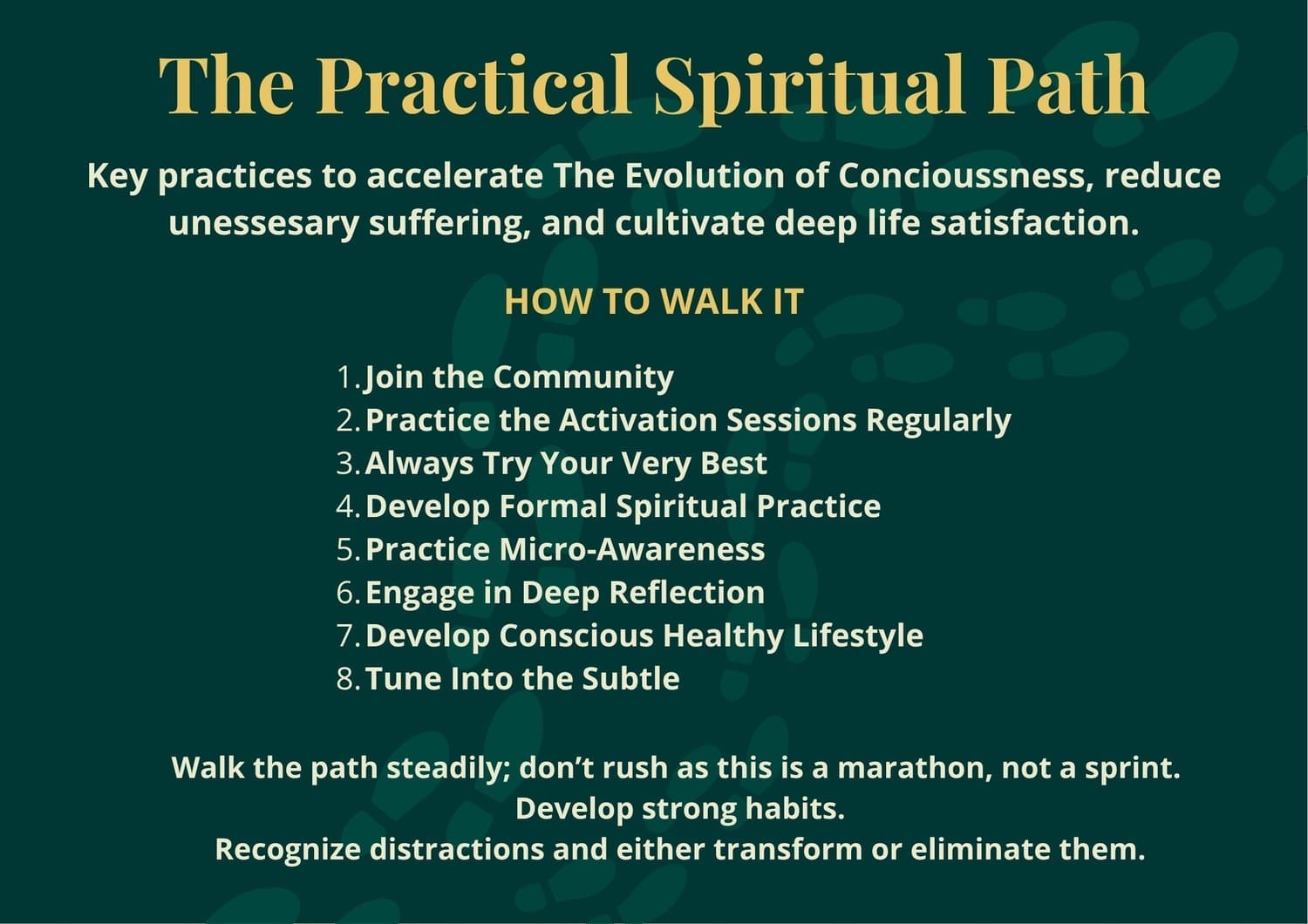
The Practical Spiritual Path
Here are key practices to help you to Accelerate the Evolution of Consciousness, Reduce Unnecessary Suffering and Achieve Complete Lasting Life Happiness.
1️⃣ Join the Community: Connect with others on the path. Receive additional insights, support, and learn about project updates through our newsletter and WhatsApp group. To join - use the form here.
2️⃣ Activation Sessions: Engage regularly with structured sessions. Sessions are meant to complete the system of Practical Spirituality.
3️⃣ Cultivate an Evolutionary Mindset: Adopt a mindset that welcomes growth, curiosity, and resilience. This supports every other practice on the path.
4️⃣ Always Try Your Very Best: A simple but powerful commitment: do your best in every moment, across all areas of life.
5️⃣ Develop Formal Spiritual Practice: Create space for daily practice—morning and evening. It helps to set up the right energy for the entire day and invite transformation to your unconscious mind while your body sleeps.
6️⃣ Practice Micro-Awareness: Bring presence into every moment. Notice subtle patterns and reactions in daily life.
7️⃣ Engage in Deep Reflection: Turn inward regularly. Reflection clarifies patterns, deepens insight, and prevents unconscious repetition of limiting behaviours.
8️⃣Develop Conscious Healthy Lifestyle: Support your spiritual path through healthy way of living, and elimination of negative habits.
9️⃣ Tune Into the Subtle: Actively engage in myriad of different approaches, and that can help you to tune more easily into spiritual in daily life.
Approach each practice with curiosity and patience. Small, consistent steps are far more effective than burning all your fuel at once. Take it easy. Focus on building steady habits through mindful repetition.
Stay aware of distractions and gently work through inner resistance.
Be patient, and trust the natural unfolding of your path.
Above all, enjoy the journey itself—free from attachment to outcomes.
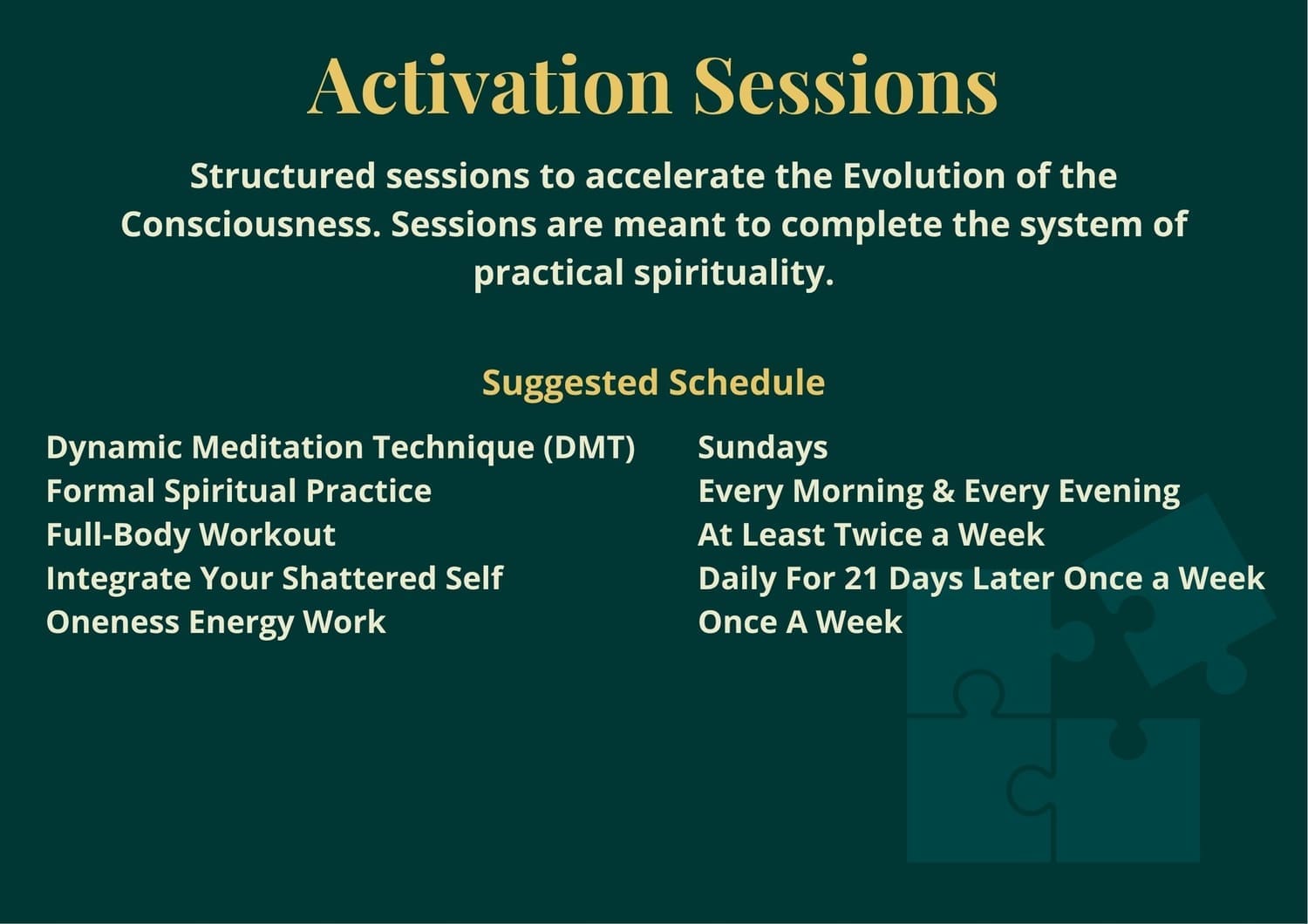
Activation Sessions
Below you can find complete list of Activation Sessions. Each one supports key aspects of the evolutionary journey and fills in potential gaps in the system with dedicated methods.
Activation Sessions:
🙏 Dynamic Meditation Practice DMT (Practice once a week) → https://www.myspiritway.org/dmt
Powerful practice inspired by the complete 8 Limbs of Yoga. It accelerates inner evolution, fosters spontaneous insight, and helps you experience a deeper reference point.
🙏 Formal Spiritual Practice (Practice every morning and every evening) → https://www.myspiritway.org/sps#headline-6bda02ea
Develop your own morning session. For example: begin by inviting sacredness through dedicating the space and time to the Divine. Practice Modular Yoga (learn more here), followed by Pranayama (for example, check out this YouTube channel). Continue with a Pratyahara practice (turning inward, such as through body scanning), then move into Dharana (deep concentration, for example, on the space between your eyebrows). From there, enter Dhyana (meditation), allowing your extended Dharana to naturally deepen into meditative absorption. You might want to set a timer on your phone for the desired length of your practice.
Develop your own evening session. For example: invite a sense of gratitude for the day. Reflect on the quality of your experiences and journal your insights. Then practice body scanning while lying on your back. Let yourself naturally shift into sleep from this calm, inward state.
🙏 Full-Body Workout (Practice at least twice a week) → https://www.myspiritway.org/sps#text-bd10c589
Develop no excuses workout. For example like no-equipment home workout, calisthenics, dance or any other type of active movement. Think holistically to develop strength, bone density and cardiovascular health.
🙏 Integrate Your Shattered Self (Practice for 21 days, and then once a week) → https://www.myspiritway.org/iyss
Integration of fragmented parts of the self. Ideal for shadow work, trauma processing, and creating a vision of inner wholeness and a beautiful future.
🙏 Oneness Energy Work (Practice once a week, learn to body scan every evening) → https://www.youtube.com/watch?v=hNC0Y9-YDG4&t
Learn to feel, transform, and flow with subtle energy. Develop sensitivity to energy fields to invite balance and help you to deepen sacred sense of oneness with life.
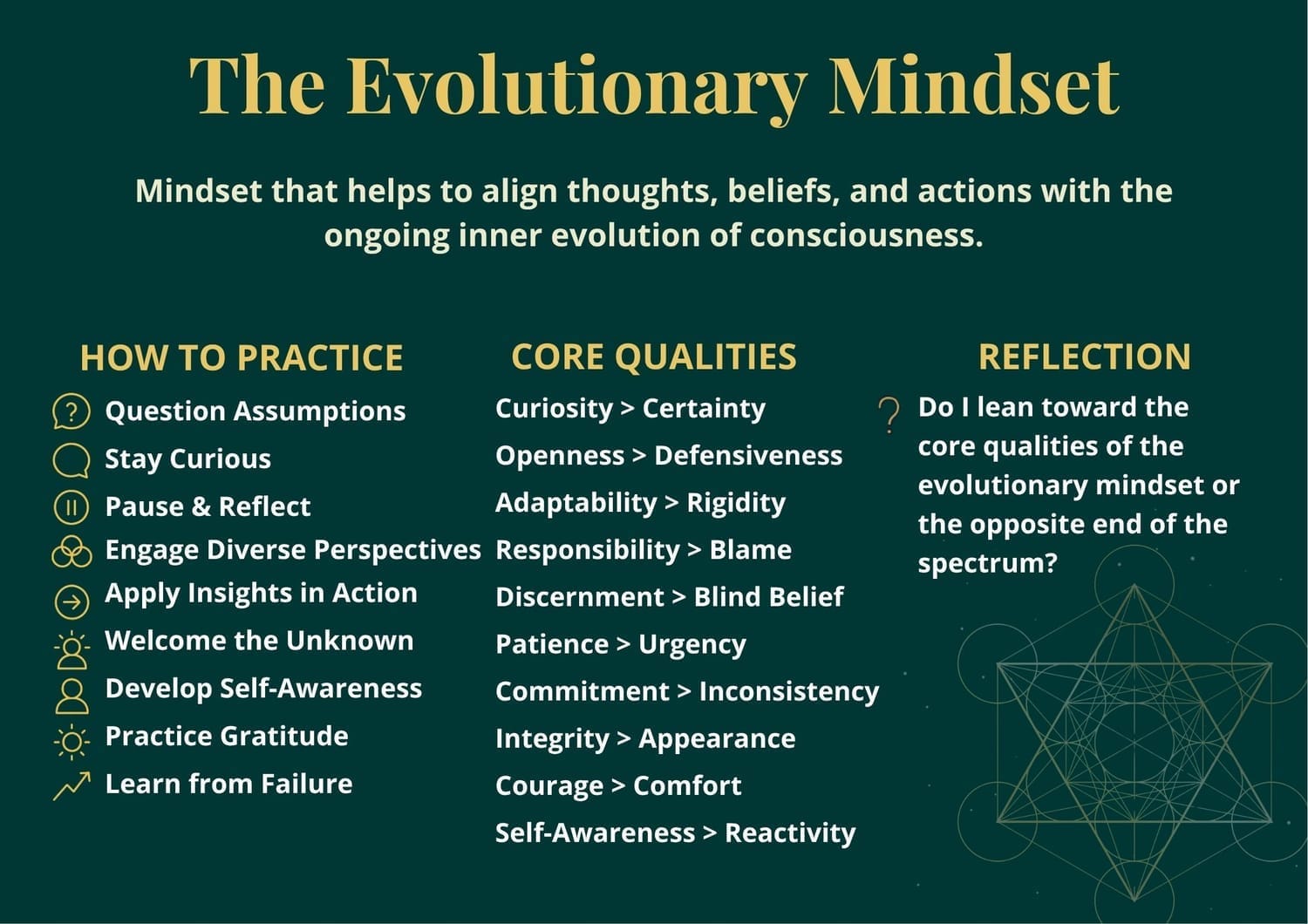
The Evolutionary Mindset
Mindset is the lens through which you experience life. This lens takes its color from your beliefs, habits, and assumptions, shaping how you perceive events, respond to challenges, and decide what is possible. An evolutionary mindset means consciously polishing that lens so it reflects truth rather than fear or limitation.
Cultivating such a mindset is not about always being right but about staying open, discerning, and ready to adjust your view as new understanding emerges. With this attitude you can meet uncertainty with clarity and greet discomfort with awareness, turning everyday life into a living path of growth.
How to Practice It:
Cultivating the Evolutionary Mindset is about active engagement in overriding current mindset automatic responses. Remember the characteristics and ways to practice and apply them actively.
👉Question your assumptions. Ask: “What if I’m seeing this through a limited lens?”
👉Stay curious. Let sincere interest guide your learning — not the need for certainty.
👉Pause and reflect. Before reacting, take a deep breath, notice your thoughts, emotions, and deeper motives.
👉Engage with diverse perspectives. Learn from philosophy, science, cultures, art, and other worldviews.
👉Apply new insights in action. Let understanding shape how you speak, choose, and show up.
👉Welcome the unknown. Step into discomfort as a space for transformation, not threat.
👉Develop your self-awareness. Use practices like journaling, meditation, and inner inquiry.
👉Practice gratitude. It widens your focus and shifts your mindset toward openness and trust.
👉Learn from failure. Let mistakes refine you, not define you.
👉Express creatively. Explore arts, music, or writing to stretch imagination and reveal new perspectives.
👉Study how ideas evolve. Trace the history of concepts and breakthroughs to appreciate knowledge as fluid and ever-expanding.
Core Qualities of the Evolutionary Mindset:
🔹 Curiosity over Certainty
🔹 Openness over Defensiveness
🔹 Adaptability over Rigidity
🔹 Responsibility over Blame
🔹 Discernment over Blind Belief
🔹 Patience over Urgency
🔹 Steady Commitment over Inconsistency
🔹 Integrity over Appearance
🔹 Courage over Comfort
🔹 Self-Awareness over Reactivity
Reflection:
🤔Which qualities of the evolutionary mindset do I already live — and which challenge me?
🤔Where in my life am I most resistant to change or new understanding?
🤔How often do I pause and reflect before reacting?
🤔What would it mean to stay open and grounded, even when I don’t have clear answers?
The fact that you're exploring this path already shows something important: you're actively seeking. That alone reflects the mindset of growth and curiosity. You're already on the path of conscious evolution.
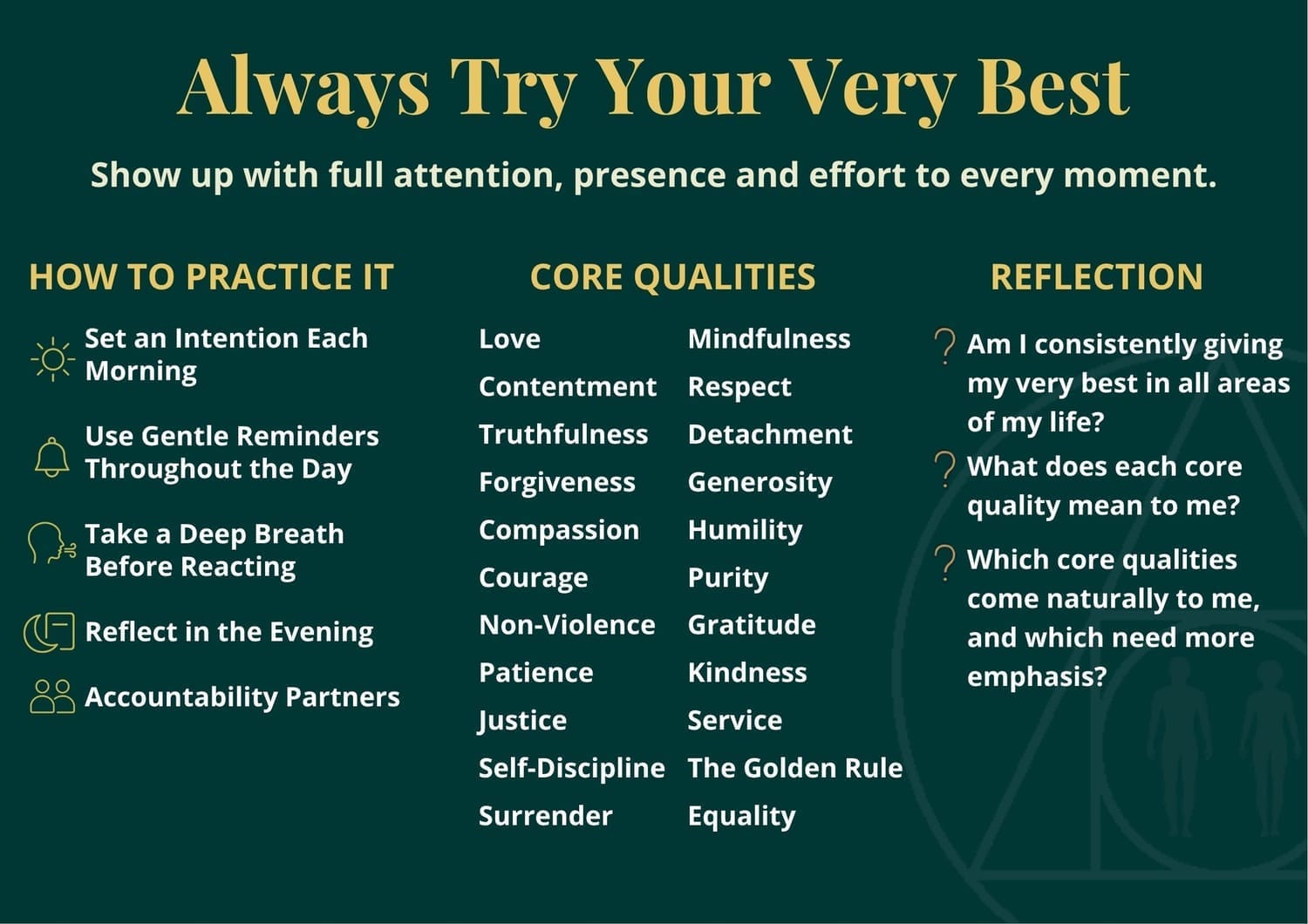
Always Try Your Very Best
This principle is simple, but deeply transformative. It means showing up with your full attention, care, and effort — no matter the situation. You don’t need to be perfect. You just need to be honest with yourself, and give what you can, as fully as you can.
Over time, this way of living begins to shape who you are. The more often you try your best, the more naturally highly vibrational qualities will begin to appear in the way you speak, act, react, make choices. Moreover, you will create a positive self-improvement loop that helps you make progress in any area where you apply this principle.
Your best won’t look the same every day — and that’s okay. What matters is that you stay in touch with the part of you that wants to grow, that wants to care, that wants to live in a way that feels true.
How to Practice:
👉Set daily an intentions. Each morning promise to yourself: “Today I’ll give my full presence and will try my very best”
👉Use gentle reminders. Be creative and find the ways that can help you pause, connect and remind about your morning intention.
👉Take a breath before reacting. A short pause can open up more conscious choices. It's practical to connect it with deep breath, as it impacts your biology.
👉Reflect in the evening. Ask yourself and journal: Where did I genuinely give my best effort today? What could I have done differently to improve the outcome? How will I remind myself to give my very best, especially in moments when I tend to forget?
👉Connect with Accountability Partner. Share your commitment and having meaningful conversations with a trusted friend, family member, on social media, or in the MySpiritWay community and schedule regular check-ins.
From Effort to Inner Qualities:
Trying your best, consistently and sincerely, is one of the most straightforward ways to grow spiritually. When your effort is purposeful, spiritual qualities begin to show up as a by product of how you’re living. Deeply spiritual person lives in a way that expresses the spiritual virtues naturally.
Spiritual Qualities That Often Emerge:
There are over 25 spiritual virtues that commonly occur across different schools of thoughts.
🔹 Love
🔹 Truthfulness
🔹 Compassion
🔹 Non-Violence
🔹 Justice
🔹 Faith / Spiritual Surrender
🔹 Obedience to Conscience
🔹 Mindfulness
🔹 Detachment
🔹 Humility
🔹 Gratitude
🔹 Contentment
🔹 Forgiveness
🔹 Courage
🔹 Patience
🔹 Self-Discipline
🔹 Equality of All People
🔹 Respect for Life
🔹 Simplicity
🔹 Generosity
🔹 Purity / Cleanliness
🔹 Kindness
🔹 Service to Others
🔹 Respect for Elders
🔹 The Golden Rule (treat others as you would like to be treated)
Reflection:
🤔Which of these qualities already feel natural to me?
🤔Which ones do I struggle to express, and where?
🤔How often do I give my full effort in ordinary situations?
🤔What holds me back from trying fully — and what would help me show up more?
Reflecting on these qualities is one of the clearest ways to see how far you have already come on the path of the evolution of consciousness.
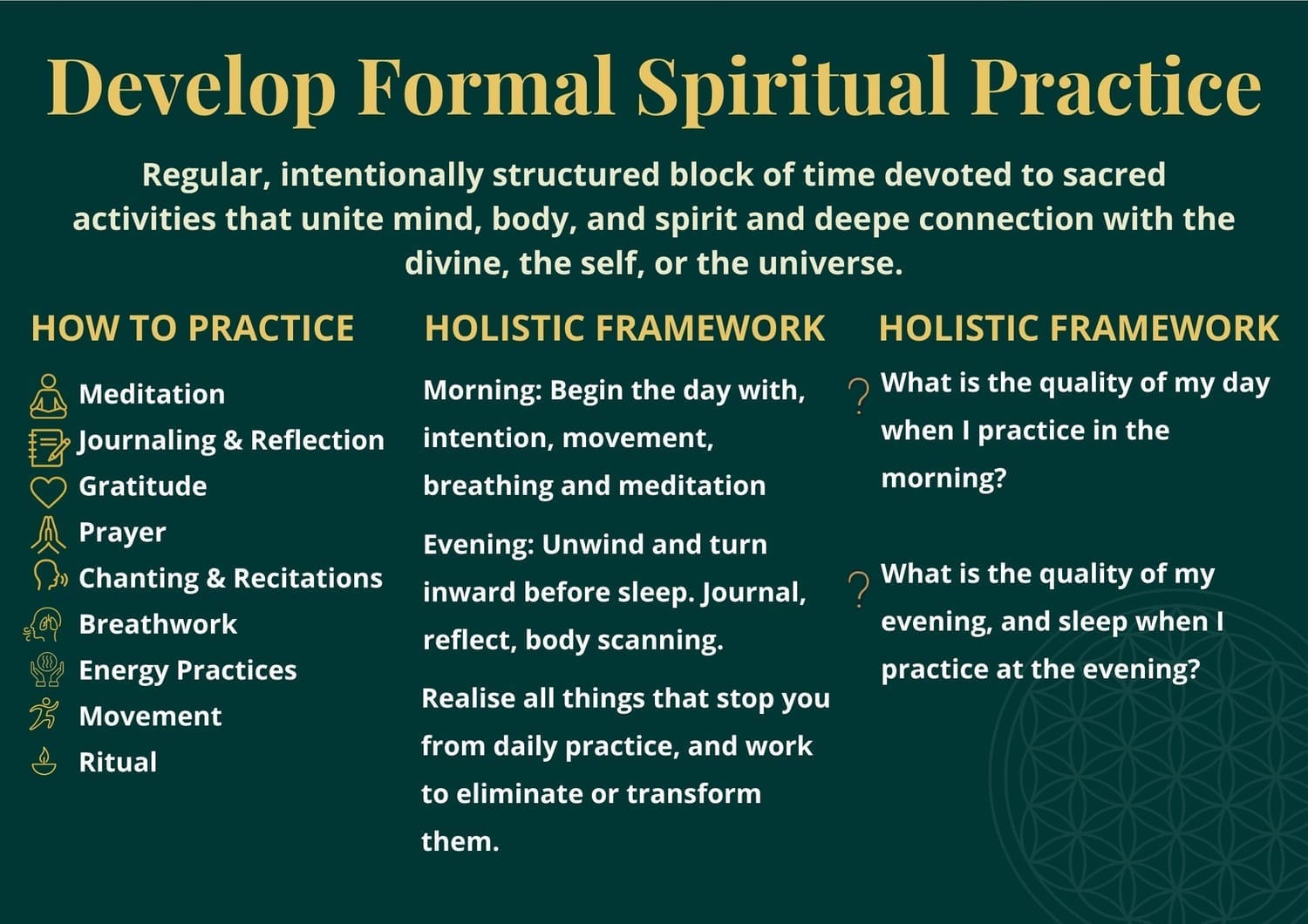
Develop Formal Spiritual Practice
Formal spiritual practice is a dedicated time to connect with something deeper — your true self, the sacred, the Divine, or the evolving flow of consciousness. It's more than a routine. It's a conscious act of remembrance and alignment.
The power of any practice comes not from technique alone, but from the quality of presence and sincerity you bring to it. Even simple practices, when approached with reverence, can open the door to meaningful transformation.
Your practice doesn’t have to be perfect or long. It just needs to be consistent and feel deeply real. Over time, this rhythm of returning — morning or evening — becomes a quiet foundation that supports your life.
Key Elements of Formal Practice:
A well-rounded spiritual practice may combine any of the elements:
🔹Meditation – silent sitting, mantra repetition, mindfulness, concentration techniques, guided visualisations
🔹Reflection – journaling, inner inquiry, reflecting on sacred texts
🔹Gratitude - listing things you are thankful for each day
🔹Prayer or Devotion – spoken, silent, or felt
🔹Movement – Yoga Asana, conscious walking, mindful stretching
🔹Breathwork – conscious breathing, pranayama
🔹Energy Practices – scanning, grounding, or subtle body work
🔹Ritual – full-moon rituals, smudging with sage, lighting candles for intention, creating altars
Morning and Evening:
🔹 Morning is the ideal time to set the energies for the day ahead. Begin with a formal practice while the schedule is still uncluttered, making it less likely to be skipped. You’ll start the day more present, aware, and centered.
🔹 Evening invites you to gather and harmonize the day’s energies before sleep. Turn inward to reflect, release, and restore, preparing body and mind for deeper rest and integration.
Aim for at least 5-15 minutes of practice daily.
My Personal Practice Morning:
My morning practice is inspired by the Eight Limbs of Yoga, a complete spiritual system that supports progress on the evolutionary path.
1️⃣ Dedication to Divinity – Begin by offering the session to a higher power or truth. Silently affirm, “I dedicate this time to the Divine; guide me.”
2️⃣ Intention for the Practice – State a clear intention for how you want to live and meet the day.
3️⃣ Asana (Yoga Flow) – Move mindfully for 20-30 minutes, synchronizing breath (ideally Ujjayi) with a full-body routine to clear energy and prepare for sitting. Here is Modular Yoga Asana that I follow.
4️⃣ Pranayama (Breathwork) – Settle into stillness and practice controlled breathing to quiet the mental noise—for example, by doing two rounds of DMT breathing, or simply observing your breath mindfully.
5️⃣ Pratyahara (Sensory Withdrawal) – Gently withdraw attention from external stimuli; scan the body without judgment to turn awareness inward.
6️⃣ Dharana (Concentration) – Anchor focus on one object: a mantra, bodily point, sacred image, or pure observation, returning attention whenever it drifts.
7️⃣ Dhyana (Meditative Absorption) – Let effort dissolve as concentration becomes effortless; the mind settles into uninterrupted presence.
8️⃣ Samadhi (Unity) – Possibly experience a sense of oneness where the “I” merges with universal consciousness, leaving a lasting imprint of clarity and peace.
My Personal Practice Evening:
My evening practice is an energy work session. The goal is to maintain energetic balance.
1️⃣ Settle & Breathe – Lie on your back. Feel the weight of your body on the bed, then follow the natural rhythm of your breath until it slows.
2️⃣ Slow Body Scan with Energy Awareness – Starting at your toes, move attention upward, inviting any sensations—warmth, tingling, heaviness—to surface. Spend extra time on spots that feel dull or hard to notice.
3️⃣ Gentle Integration – If a memory or emotion appears, observe it without judgment. Allowing it to be expressed often “unblocks” the energy tied to that experience.
4️⃣ Second Pass & Surrender – After reaching the crown of your head, release control and let awareness drift wherever it’s needed. Many nights this easeful state flows straight into deep sleep.
Reflection:
🤔 What helps me feel connected to something deeper?
🤔 What practice do I feel naturally drawn to?
🤔What stops me from practicing, and how can I work through it?
Consistent spiritual practice needs to be yours — meaningful, honest, and grounded in care. Let it evolve with you.
👉 Read the full chapter → (Discover more in depth my personal practices)
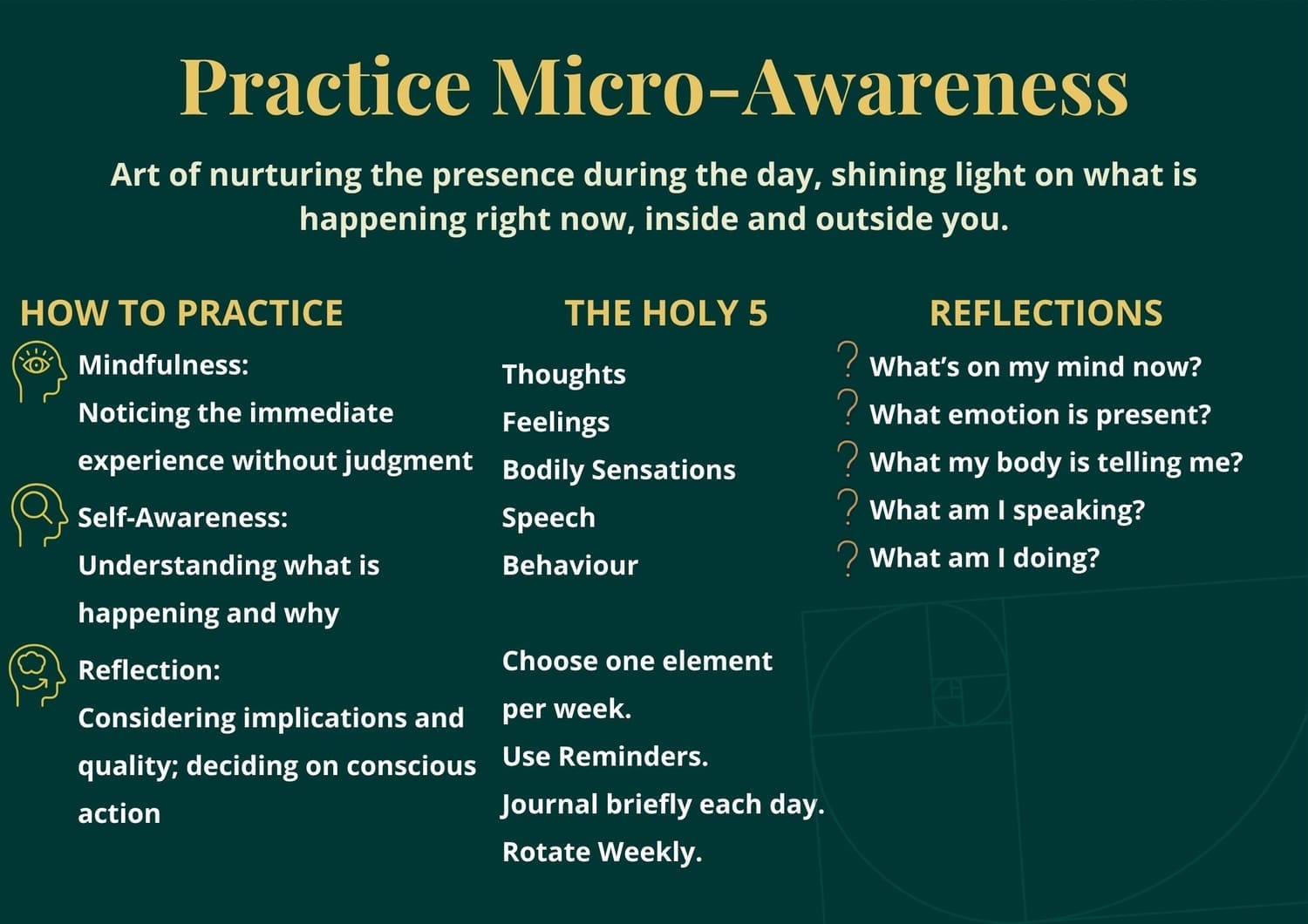
Practice Micro-Awareness
Micro-awareness means paying attention to what is happening right now, inside and around you. Instead of running on autopilot, you pause long enough to notice small signals—a quick thought like “I can’t do this,” the first spark of an emotion, tightness in your jaw, the sound of your own voice, or the moment your hand reaches for your phone. By meeting these cues with curiosity, you naturally lift the quality of your whole experience.
When you make this a habit, everyday life turns into practice ground. Over time your brain starts to prefer these conscious choices, wiring itself for greater clarity and a steady sense of being awake.
How It Works:
Micro-awareness weaves together three core capacities:
🔹 Mindfulness: Noticing what is happening in the moment.
🔹 Self-Awareness: Understanding why it is happening.
🔹 Reflection: Evaluating whether it aligns with who you want to be and making small, conscious adjustments.
The “Holy 5” — Core Areas of Focus:
Pick one area at a time for at least a week and run it through the three questions. Here’s how that sounds in practice:
👉 Thoughts
Mindfulness: “What thoughts are present right now?”
Self-Awareness: “What might have sparked this way of thinking?”
Reflection: “Does it support or drain me? How can I reframe it to support my goals?”
👉 Feelings
Mindfulness: “Which emotion is here right now?”
Self-Awareness: “What triggered or is fuelling this feeling?”
Reflection: “Is it expanding or constricting me? What response would honour both the feeling and my values?”
👉Bodily Sensations
Mindfulness: “What sensations do I notice in my body right now?”
Self-Awareness: “What is this sensation trying to tell me?”
Reflection: “Is this sensation grounding or depleting me? What small step could help restore balance?”
👉Speech
Mindfulness: “How and what am I speaking?”
Self-Awareness: “What emotion, intention, or need is driving these words?”
Reflection: “Does my speech uplift, defend, or disconnect? What subtle shift could realign it with who I aspire to be?”
👉 Behaviour
Mindfulness: “What action or impulse am I noticing right now?”
Self-Awareness: “Is it driven by habit, emotion, or conscious choice?”
Reflection: “Does it reflect my values? What tiny adjustment would move it closer?”
You don’t need to memorise these questions; they’re simply examples to illustrate the process. Just pause, notice, seek understanding, and adjust within any of the Holy 5 areas. With practice, the simple act of noticing will reveal each experience more fully, deeper insight will arise, and the impulse to refine your responses will emerge naturally.
A Weekly Practice Flow:
🔹Choose one element per week
🔹Mindfulness (Noticing) — Pause during the day. Observe what’s happening in your chosen area.
🔹Self-Awareness (Understanding) — Reflect: What’s behind it? What does it try to tell me? What pattern does it reveal?
🔹Reflection (Redirecting) — Think deeply: “Is this aligned with my values?” Make a small adjustment if needed.
🔹Journal briefly each day — What did you discover? What could shift?
🔹Rotate weekly — One by one, build awareness across all five elements.
Tips for Success:
🔹Keep it simple — A few check-ins a day is enough. You can also simplify the process, by simply practicing mindfulness and whenever space allows deepen the process into self-awareness and reflection.
🔹Use reminders — Notes, alarms, or visuals help you remember to pause.
🔹Be curious, not critical — You’re not judging yourself. You’re getting to know yourself better.
🔹Stay flexible — Some days are more spacious than others. Do what you can.
🔹Celebrate progress — Each moment of awareness is a step forward. Invite joy which comes from being present.
🔹Play the long game — Small shifts lead to deep change over time.
Micro-awareness turns the ordinary into the sacred. It’s how you catch yourself in the middle of life and gently choose something of higher quality.
👉 Read the full chapter → (Learn about everything in greater detail)
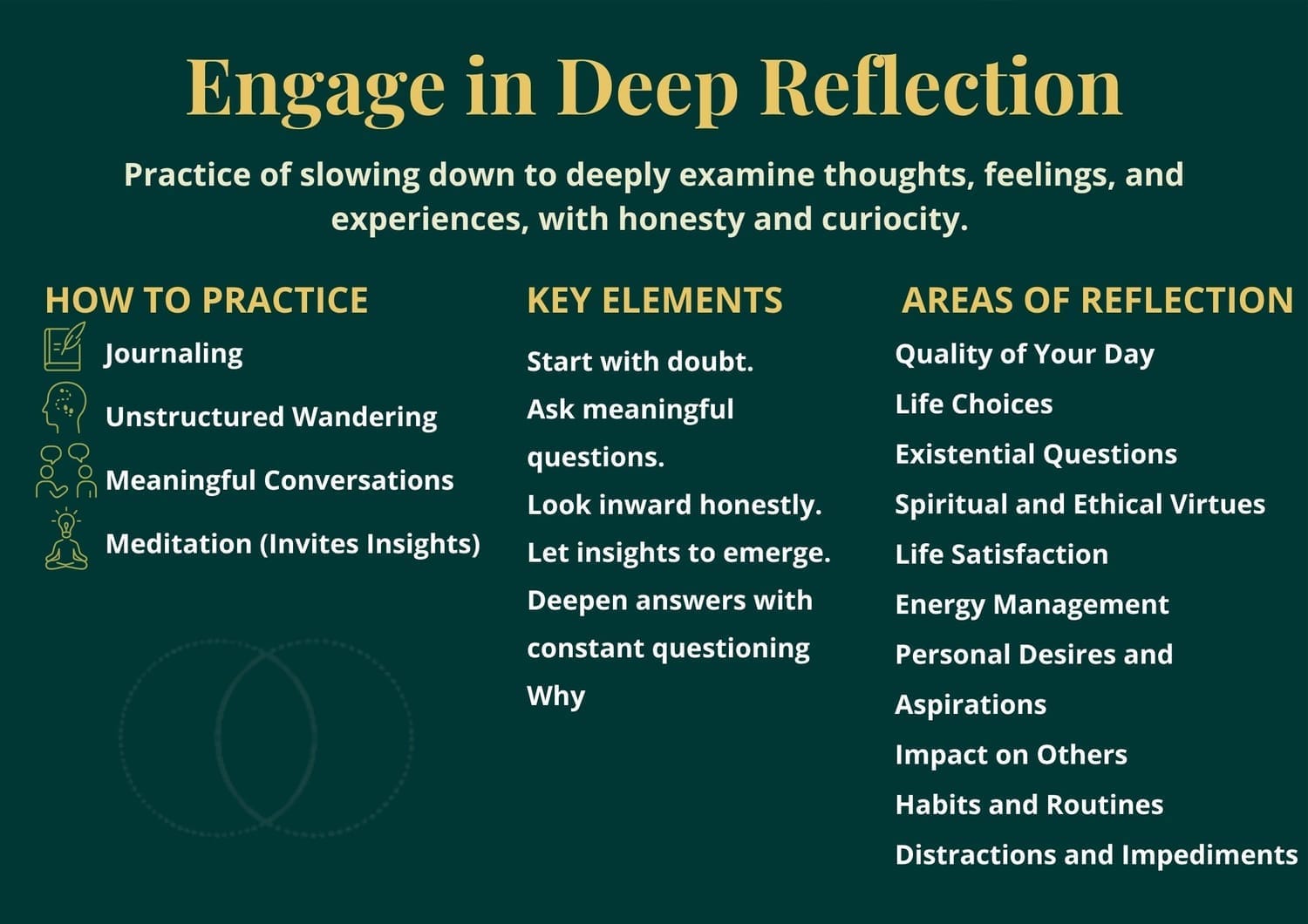
Engage in Deep Reflection
Deep reflection is the practice of slowing down to think deeply and to examine your thoughts, emotions, and experiences with honesty and curiosity. It moves you from surface living to conscious living, by inviting deeper questions, facing uncomfortable truths, and discovering what truly drives you. Reflection is a form of spiritual inquiry, where rather than chasing quick answers, you learn to sit with uncertainty, explore the deeper “why” behind your life, and let that insight shape your choices.
As you reflect, you see your patterns more clearly and gain the freedom to change them. A quiet space opens between trigger and response, and in that space wisdom guides better decisions. Your sense of purpose sharpens, aligning daily actions with what matters most. Emotional honesty deepens, bringing steadiness and resilience. Above all, reflection restores a sense of depth: instead of drifting through your days, you begin to live with greater awareness, intention, and meaning.
Key Elements of Deep Reflection:
🔹 Start with doubt. The willingness to admit “I don’t know” is often the doorway to real insight.
🔹 Ask meaningful questions. “Why do I believe this?” “What am I truly feeling?” “Is this action aligned with who I want to be?”
🔹 Look inward with honesty. Notice recurring thoughts, emotional reactions, and habits—especially the uncomfortable ones—for they reveal the patterns you are ready to understand and transform.
🔹 Let insight emerge. Clarity often comes not from forcing answers but from sitting quietly and allowing the truth to rise on its own.
How to Practice It:
👉Journaling. A classic method. Write for 10–15 minutes daily. Don’t filter. Let your thoughts out and then look back at them with curiosity. Some of your best insights will come after writing, not during.
👉Quiet Wandering. Let your mind explore freely — while walking, gazing at the sky, or sitting in silence. Set aside a few minutes each day with no devices, no agenda, just space to think.
👉Meaningful Conversations.Talk deeply with someone who listens well and asks real questions. These connections spark insight and help you hear your own thoughts more clearly.
👉Meditation. Meditation clears the noise. After sitting in silence, your mind becomes more reflective by nature. Some thoughts rise spontaneously that are worth exploring.
What to Reflect On:
Here are themes to explore during your reflection sessions:
🤔 Quality of Your Day: Did I show up honestly, kindly, and with presence, or did fear or autopilot take over?
🤔 Life Choices: Which choices have shaped my life so far, and are they moving me toward the life I want?
🤔 Existential Questions: What felt meaningful today, and what did I do that mattered?
🤔 Spiritual and Ethical Virtues: Did my actions reflect spiritual virtues, and where could I improve?
🤔 Life Satisfaction: Which moments truly satisfied me, and where did I feel unfulfilled?
🤔 Energy Management: What boosted or drained my energy, and when did I feel most alive?
🤔 Personal Desires and Aspirations: What do I genuinely want, and did I take a step toward my long-term goals?
🤔 Impact on Others: How did my words and actions affect people, and what energy did I bring?
🤔 Habits and Routines: Which routine served me well, and what tweak could make tomorrow smoother?
🤔 Distractions and Impediments: What pulled my focus away, and what pattern or belief held me back?
You don’t have to reflect on all of these. Start with what naturally pulls your attention and trust that one question, followed deeply, can change everything.
Tips for Making It a Habit:
🔹Keep it simple. Even 10 minutes a day can be life changing.
🔹Choose your time. Early morning or before bed are especially powerful.
🔹Be honest, not perfect. The goal is to see clearly — not to look good.
🔹Stay curious. Judgment blocks insight. Openness invites it.
"The unexamined life is not worth living." — Socrates
Through deep reflection, you don’t just live. You learn to live well — with clarity, depth, and truth.
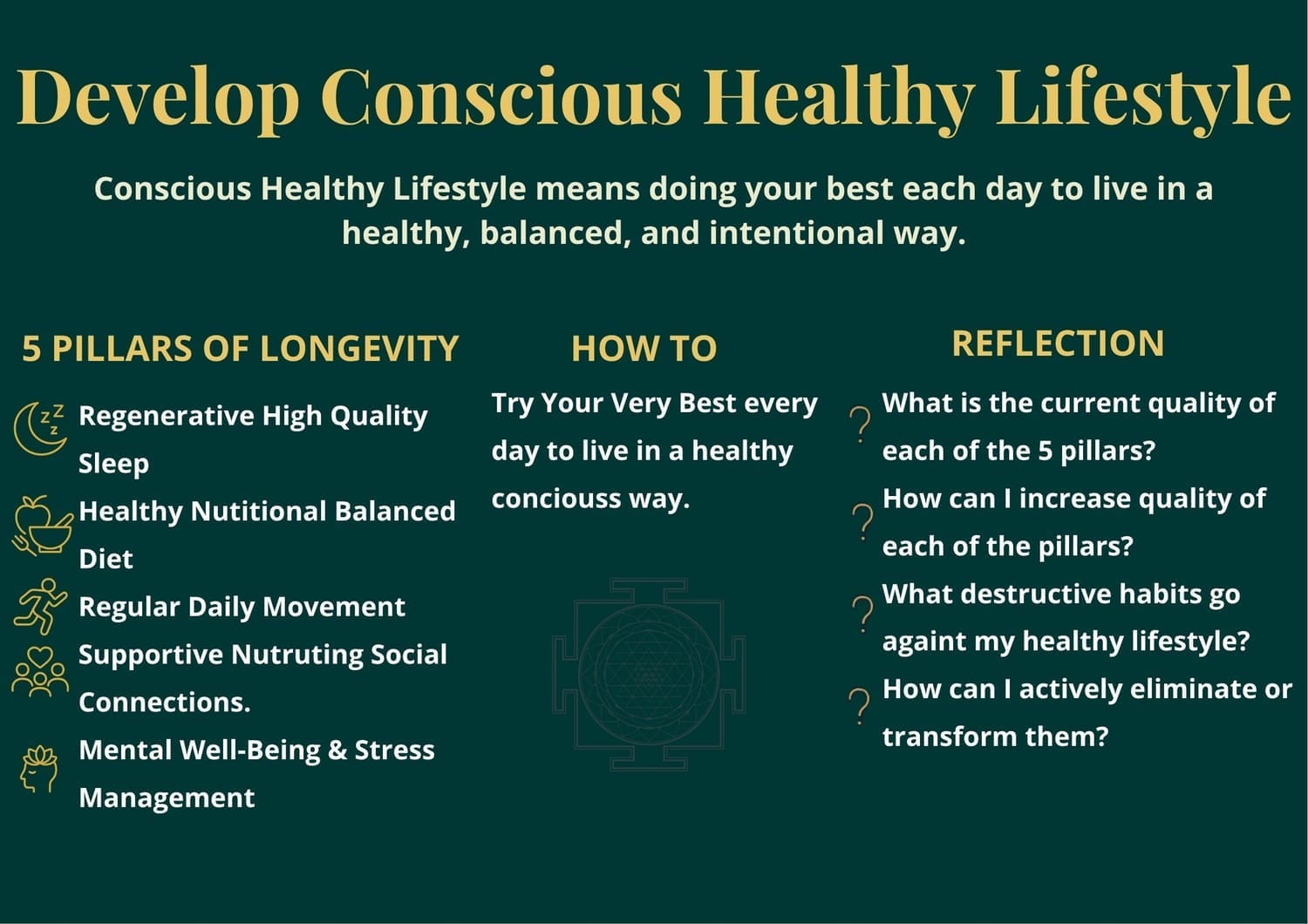
Develop Conscious Healthy Lifestyle
Conscious Healthy Lifestyle means doing your best each day to live in a healthy, balanced, and intentional way. By caring holisticaly for mind body and spirit, you create the inner and outer conditions for consciousness to keep evolving. This approach nurtures overall well-being and vitality, lowers disease risk, supports healthy aging, and leads to a longer, more energetic, and fulfilling life.
Key Principles:
🔹 Balance over extremes. Choose steady, sustainable habits—like regular exercise and a varied whole-food diet—instead of short-lived trends, strict “lose-weight-fast” diets, or suddenly over-exercising after long inactivity.
🔹 Listen to your body. Pay attention to signals—energy, tension, appetite, mood—and adjust your actions accordingly.
🔹 Start small, stay consistent. Lasting change grows from modest, repeatable steps that compound over time, not from occasional big efforts.
🔹Apply the 80/20 rule. Start with the few habits that deliver most of the benefits—solid sleep, whole-food meals, daily movement, stress resets, and supportive relationships. Master these first to gain 80 % of the results with 20 % of the effort.
🔹 Treat it as spiritual practice. Caring for your body is part of spiritual path; honour it as a living temple through which consciousness evolves.
How to Practice It:
👉 Regenerative High Quality Sleep. Keep a steady 7–9-hour sleep schedule, wind down without screens, and sleep in a dark, cool room to let your body repair and recharge.
👉 Healthy Nutritional Balanced Diet. Fill your plate with whole foods—plenty of vegetables, quality protein, and healthy fats—while cutting back on ultra-processed items, eat slowly and with full attention.
👉 Regular Daily Movement. Walk at least 30 minutes each day, add simple strength work twice a week, and stand or stretch briefly every hour to keep blood and energy flowing.
👉 Supportive Nurturing Social Connections. Spend real, undistracted time with people who uplift you, practice active listening, and limit interactions that leave you depleted.
👉 Mental Well-Being/Stress Management. Use short deep-breathing breaks, brief moments in nature, and a nightly gratitude note to calm the mind and build resilience.
👉 Reduce Harmful Habits. Identify what drains you and makes you addicted with low self control then cut back step by step and swap each one for a healthier option.
👉 Design Your Days with Care. Create a rhythm that fits you: fixed mornings and evenings, keep the middle flexible, and make sure every day includes quality sleep, good food, daily movement, meaningful connection, and time to deeply relax.
Reflection:
🤔What is the current quality of each of the health pillars?
🤔How can I increase quality of each of the pillars?
🤔What destructive habits go against my healthy conscious lifestyle?
🤔How can I actively eliminate or transform them?
Tips for Making It a Habit:
🔹Start with what feels obvious. Often the next right step is the one you’ve already been thinking about.
🔹Don’t wait to be perfect. Begin where you are. Build slowly.
🔹Track how you feel. Let results guide your motivation.
🔹Let it be enjoyable. Don't push yourself like maniac. You’re learning to love your life more deeply.
🔹Stay connected to your “why.” You pursue healthy lifestyle so you can have the energy, clarity, and freedom to live the life you truly want.
A conscious lifestyle is a form of self-love. It’s not something you do once it’s something you practice daily.
👉 Read the full chapter → (Learn about different way to take care about each pillar)
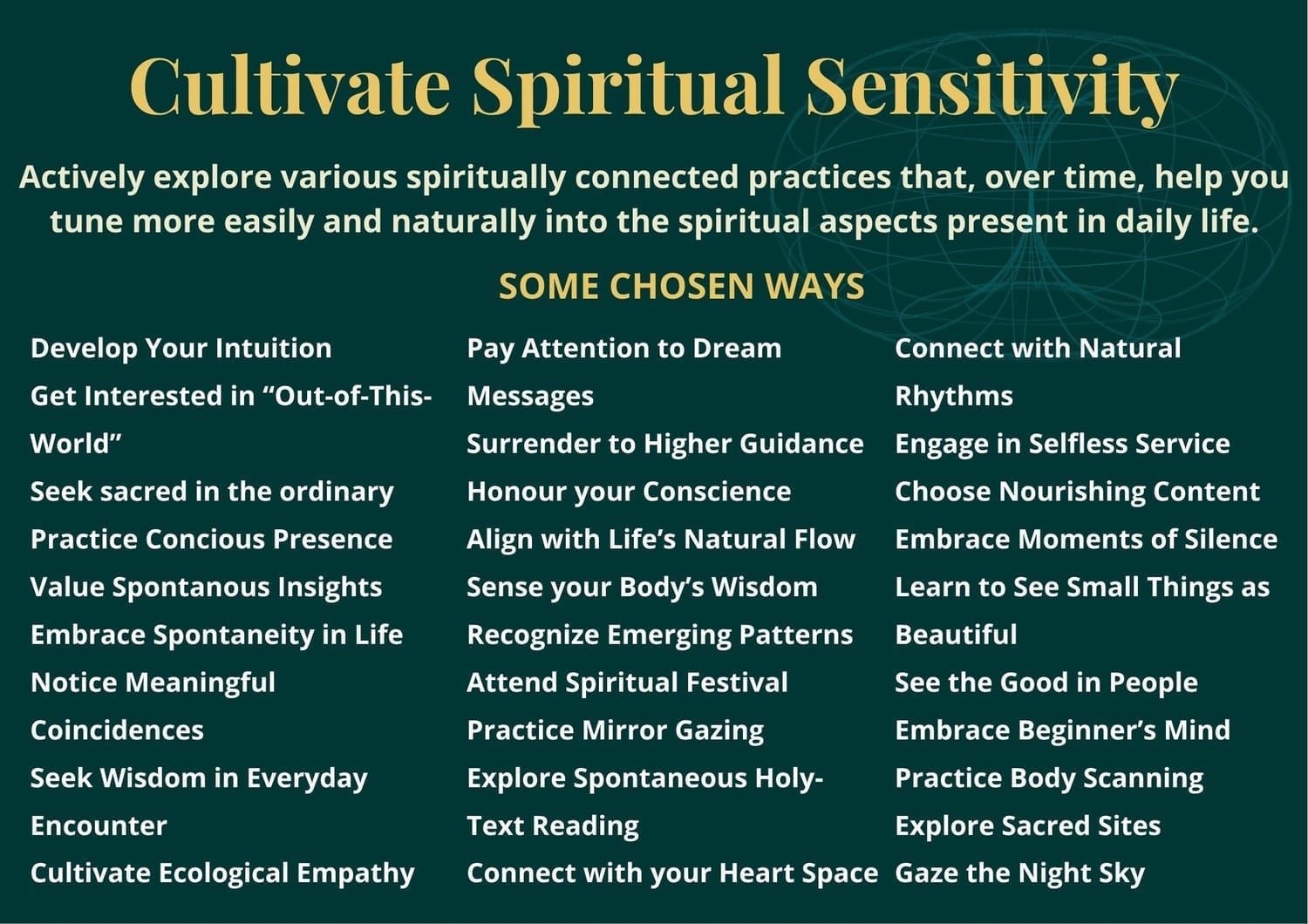
Cultivate Spiritual Sensitivity
Actively explore a variety of spiritually connected practices that, over time, help you tune more naturally and effortlessly into the spiritual aspects woven into everyday life. As with anything we devote time and presence to, our connection deepens, and what once felt distant becomes part of our natural awareness.
How to Practice It:
There’s no single path. There are many doorways. Here are just a few ways to turn toward the subtle:
👉Practice Conscious Presence – Slow down and become aware of your body, breath, and surroundings. Eat, walk, or listen without distraction.
👉Develop Your Intuition – Learn the signals of your inner voice. Pause before decisions, notice body sensations, and reflect on gut feelings.
👉Connect with Nature – Spend time outside, walk barefoot, observe the seasons, feel the wind or sun on your skin. Nature helps attune your senses.
👉Meditation and Breath Awareness – Practice sitting still or breathing consciously to quiet the mind and become more sensitive to subtle impressions.
👉Pay Attention to Dreams – Keep a dream journal and reflect on recurring symbols or feelings. Dreams often carry inner wisdom.
👉Notice Synchronicities – Be open to meaningful coincidences. Reflect on repeated symbols, numbers, or events that catch your attention.
👉Explore Sound and Vibration – Listen deeply to music, chanting, or singing bowls. Feel how sound moves through your body and shifts your energy.
👉Spontaneous Sacred Text Reading – Set an intention and open a book of wisdom randomly. Let the passage offer intuitive guidance.
👉Invite Sacredness into Daily Life – Treat ordinary moments as sacred: lighting a candle, speaking kindly, or offering gratitude.
👉Use Intuitive Tools – Try using a pendulum, oracle cards, or intuitive writing — not as fortune-telling, but as ways to connect with inner guidance.
What to Reflect On:
🤔When do I feel most tuned in to something greater?
🤔What daily habits dull my awareness? What practices help me feel more present and aware?
🤔Do I trust my inner signals or dismiss them?
🤔What’s one subtle moment I noticed today that I would have missed a year ago?
🤔Am I able to notice the spiritual in what might seem ordinary?
Tips:
🔹Follow curiosity, not pressure. Do what draws you in naturally.
🔹Drop the need to “achieve” something. Just be present.
🔹Keep a journal of your spiritual experiences. Over time, it becomes meaningful to revisit them — you may notice patterns, deeper insights, or how much you’ve transformed.
As a spiritual seeker, you are invited to explore and through this journey, you’ll uncover different aspects of reality and of yourself. Each doorway offers a unique glimpse into another layer of existence. Stay open, stay curious, and let your direct experience be your guide. In time, you may also discover a practice that truly resonates with you—one that helps you connect more deeply with the subtle world.
Receive Insights from the Extensive Library of Practical Spirituality
Everything you find on this website is complete and sufficient, so no further searching is necessary—simply focus on the practice.
However, there are many materials that were used to reach this point, including deeper insights, fascinating details, and supportive resources. These can help you stay on the path, serve as reminders, offer inspiration and additional guidance.
BONUS
- you will be first to know about the newest projects
- you will receive early access to the community forum - get to know each other closer and engage in meaningful discussions (currently on WhatsApp)
*every offering is based on the fair exchange model, by submiting you agree to receive emails from me (you can cancel anytime)
Fair Exchange Model
I wish to make this and all my work affordable and accessible to everyone. This project operates on the FAIR EXCHANGE MODEL, which means it's NOT FREE, but it's allowing you to contribute in a way that feels meaningful to you.
I envision a community founded on honesty and openness, which is why I leave the choice of how you can support this work entirely up to you. It's important that it must come from the good will, deeply from the heart.
Below are some ways you can contribute:
👉 If you’re interested in an offering but can’t afford it - email me at kamiljan@myspiritway.org. Tell me your story, how much you can contribute, and why this offering is important to you — I’ll send you a special discount code.
👉 Make a financial contribution – see options below.
👉 Share this guidebook's main page with others: https://www.myspiritway.org/sps2
👉 Send a testimonial or feedback to me at kamiljan@myspiritway.org.
👉Share your perspective - email me at kamiljan@myspiritway.org your perspective over practical spirituality, maybe there is something that is missing or could be described better in the introduced approach?
👉 Help grow the MySpiritWay community – email me at kamiljan@myspiritway.org, and share your idea on how you can help
👉 Contribute creatively in a way that resonates with you. - be proactive
Your support allows me to dedicate my time and energy to developing this project and helping others without needing to seek outside employment. The more this project grows, the more resources—financial and otherwise—will be available not just for its continued development but also for supporting other meaningful initiatives that can benefit the world.
By supporting this journey, you’re helping to expand its reach and impact.
Thank you for your kindness and generosity—it truly makes a difference to the whole world.
And let's not forget the more we can give the more we can receive.
Single Support Options
- allow progression for the mission.

BTC (BITCOIN)
bc1qmz0ydhuvlax9s8n6zgvxw5cvs5fucl0tt0jc23

ETH (Etherium) min. 0.1 ETH
0x1dA94A7bDd2aE4181Fb42c74C1E79d54CcEc8aD2

Kamil Włodarczyk
IBAN: LT79 3250 0272 4579 4080
BIC/SWIFT: REVOLT21
Bank name and address:
Revolut Bank UAB
Konstitucijos ave. 21B, 08130, Vilnius, Lithuania
Correspondent bank BIC: CHASGB2L
Monthly Support Options
- crucial as they offer stability for the mission.
The GuideBook's FAQ
This guidebook does not promote or encourage affiliation with any cult or religious organization. It is designed for independent seekers of truth, emphasizing personal mastery and self-discovery. The focus is on empowering individuals to develop their own understanding. It also encourages contribute positively to the world and their communities, with respect and appreciation for diverse perspectives.
This guidebook does not offer unrealistic promises or quick fixes. It clarifies from the begining, that it's rather life long journey. The journey you decide to consciously embark on is a lifelong marathon rather than a sprint. I encourage you to maintain dedication and focus while finding ease in the journey.
This guidebook does not reject scientific inquiry or rational thinking. On the contrary, it embraces the integration of scientific findings with intuitive wisdom, creating a balanced approach to spiritual growth that is both practical and evidence-based.
This guidebook is designed to be accessible to everyone, regardless of their background or prior experience. It presents concepts and techniques in a straightforward and understandable manner, making it an ideal resource for those new as well as cosidered as advanced to personal and spiritual development.
This guidebook does not claim to have all the answers or to be the ultimate solution for everyone. It serves as a resource and a guide, encouraging readers to explore their own paths and discover what works best for them on their journey of self-discovery and growth.
All the offerings are NOT FREE but are based on community support and the Fair Exchange Model (click here to learn more). Which allows you to contribute in the meaningful way to you.
Read the Complete Book Here
DISCLAIMER. The content provided on this website, including all information, services, resources, live stream videos, images, and materials provided in newsletters, is offered solely for educational and informational purposes. It is not intended as, and should not be considered, medical, psychological, legal, or professional advice. The practices and techniques discussed herein are based on personal experiences and individual interpretations and are not a substitute for professional consultation. You acknowledge and agree that you are solely responsible for your own health, safety, and well-being when applying any information or techniques from this website. The authors, contributors, and affiliated parties shall not be liable for any outcomes, damages, or losses arising from your use of this information. This website may contain links to external websites that provide additional resources or information. We do not endorse, control, or assume responsibility for the content or practices of any third-party websites. Always consult with a qualified healthcare provider or other appropriate professional before starting any new health regimen or if you have any concerns regarding your physical or mental health. While we strive to ensure that the information provided is accurate and valuable, we make no representations or warranties regarding the effectiveness, suitability, or completeness of any practices or information provided. Individual experiences and results may vary. By using this website and subscribing to our newsletters, you acknowledge and agree to the terms of this disclaimer. If you do not agree with these terms, please refrain from using this website and our services.

MySpiritWay Practical Spirituality. We can help you; create a supportive lifestyle, accelerate spiritual and personal growth, reduce life suffering, raise your consciousness, and achieve life satisfaction across all fields.
Simplified Practical Spirituality
Everything you need to know about practical spirituality and the evolution of consciousness.
Get Access here
GPB, EUR, USD, CHF and more...
Kamil Włodarczyk
IBAN: LT79 3250 0272 4579 4080
BIC/SWIFT: REVOLT21
Bank name and address: Revolut Bank UAB
Konstitucijos ave. 21B, 08130, Vilnius, Lithuania
Correspondent bank BIC: CHASGB2L










